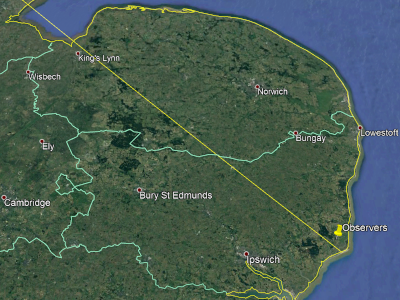 Figure 1. Graze track. Track in Google Earth.
Figure 1. Graze track. Track in Google Earth.Orwell Astronomical Society (Ipswich)
Grazing Lunar Occultations, 1974-2019
Introduction to grazing lunar occultations.
In an typical year there are a dozen or so grazing lunar occultations that can be observed from the British Isles, with several visible from East Anglia. The first attempt by OASI to observe a graze was of the star 37 Sgr, on 21 October 1974. Subsequently, members of OASI occasionally attempted to observe grazes whenever good opportunities arose. Until the early years of the 21st Century, unfortunately, few attempts succeeded; but, after observing the graze of 91 Leo on 30 December 2007, our luck changed and, since that event, many more attempts have been successful.
Note 1: below, location-specific details of events are correct for the observing location or intended observing location.
Note 2: unless stated to the contrary, times below are UT.
Star
ZC2401, H81754
In 2019, the grazing lunar occultation season began early! The first graze of the year was at 05:34 on 01 January. Alan Smith undertook several reconnoitres and identified that the most practical viewing locations were in the vicinity of Southwold lifeboat station. Fortunately, persistent cloud cover meant that would-be OASI observers attempted no observation, so were spared the problem of avoiding the attentions of New Year revellers intent on drowning each other in Southwold harbour!
The second graze of 2019 was forecast to occur during the lunar eclipse on 21 January. The star was faint at magnitude 9.7 and even during eclipse conditions threatened to be difficult to observe. In consequence, no observing trip was organised.
The third graze was different! As usual, Alan and James used the freeware software package Occult to calculate nominal circumstances. The time, 03:29, was unsociable but other parameters were generally favourable. The star, ZC2401, was relatively bright at magnitude 5.6 (Hipparcos, visual). The graze occurred on the southern limb, so offered the prospect of multiple disappearances/reappearances. Although the approach was on the bright limb, the actual disappearances and reappearances were predicted for the dark limb.
Alan used Google Earth to identify potential observing locations, all in relatively isolated locations. After a field reconnaissance and discussion on a Wednesday evening at Orwell Park Observatory, there was a consensus to observe from the beginning of a footpath along the west side of Tunstall Forest, off a minor road, approx 0.5 km NE of the five-way crossroads of the B1084 / Snape Road / Hospital Road / Sudbourne Road / minor road.
Following the usual arrangements, Alan contacted previous graze observers plus anyone who had responded to the publicity for the event in the OASI Newsletter. Four observers mustered for the customary go/no-go audioconference at 22:00 on the evening of the graze, Andy Gibbs and Joe Startin joining Alan and James. The preceding days' forecasts of cloud cover were very changeable, but the short-range forecast for the morning of 26 March was for certain clear skies, so the decision to proceed with observations was easily made. Alan informed Suffolk Constabulary by email of the group’s intentions.
Traffic congestion in East Anglia in the early hours of a Tuesday morning is not generally a problem and so it proved on this occasion. In fact, wildlife proved more numerous than vehicles. James left home at 01:30 and saw more deer (three) than other cars (two) en route to site. Andy also encountered deer en route (a herd near Butley) and had to slow down for a badger crossing the road.
Arriving first on site at 02:20, James admired the view while waiting for the others to arrive. The night sky was glorious, with only a very slight haze, the Moon in southern Ophiuchus appearing above Antares and above and to the west of Jupiter. The site itself was excellent, hard underfoot, completely obscured from the road by mounds of Earth, perfectly aligned for observations of the graze, and with space for several vehicles and observers. Alan arrived at 02:40 followed some five minutes later by Andy. Alas, Joe was a no show for the event; it transpired later that he suffered an alarm malfunction and awoke too late to head for site.
The three observers were all set up by 03:00 and had easily acquired the star. Alan and Andy observed visually, but James decided to take a video. This was something of a gamble because, although the star was easily visible in the eyepiece, in the viewfinder of the camera it was initially invisible against glare from the bright lunar limb. James therefore set the camera based on experience at previous grazes and hoped for the best. Unfortunately, an overly hasty setup and careless execution of the telescope alignment procedure resulted in inaccurate automatic tracking and the need for frequent manual adjustments to keep the star and Moon in frame. Table 1 summarises the equipment in use and approaches to timing the event.
Observer
Equipment
Timing Method
Table 1. Observers, equipment and approaches to timing the event.
As time progressed, a slight haze developed, reducing contrast, but not so much as to cause problems, and the star remained easily visible in the eyepiece. Once the star had crossed the terminator and appeared against the dark limb, shortly before the first disappearance event, it became visible too in the camera viewfinder. The star was at relatively low altitude, only 17°, so the image was quite unsteady but, again, this did not cause any serious difficulties. Alan noted that the image quality improved steadily as his telescope equalised to the ambient temperature, approx 1°C.
 Figure 1. Graze track. Track in Google Earth.
Figure 1. Graze track. Track in Google Earth.
The lunar limb profile (figure 2, calculated using Occult) offered the prospect of observing almost half a minute of repeated short flashes of the star against the limb, followed by a complete disappearance lasting almost one and a half minutes. However, the observers each recorded two disappearances, with sharp transitions. No flashes were observed, neither visually nor in a later frame-by-frame analysis of the video. Table 2 and figure 3 compare predicted and observed event times.
| James | Andy | Alan | Theory |
| 03:29:14 D1 | 03:29:14 D1 | 03:29:14 D1 | 03:29:15 start of multiple flashes |
| 03:29:48 R1 | 03:29:50 R1 | 03:29:49 R1 | 03:29:41 end of multiple flashes |
| 03:30:14 D2 | 03:30:15 D2 | 03:30:14.5 D2 | 03:30:20 D1 |
| 03:31:48 R2 | 03:31:49 R2 | 03:31:48 R2 | 03:31:44 R1 |
Table 2. Event timings. (D=disappearance, R=reappearance.)
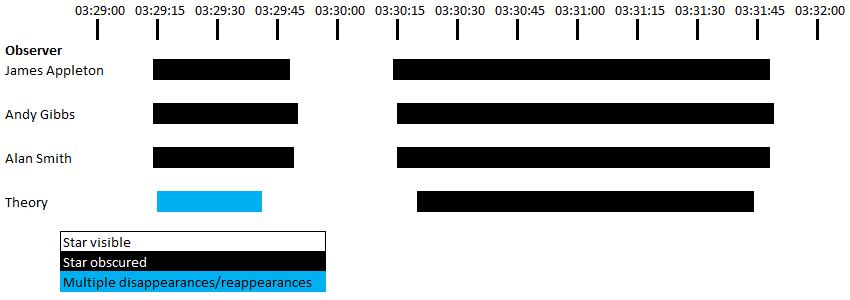 Figure 3. Event timings.
Figure 3. Event timings.
Figure 4, extracted from the video for time 03:29:52, shows the scene between first reappearance and second disappearance. Brightness has been artificially increased in the region immediately surrounding the star. The lunar features responsible for occulting the star appear to have been in the region behind crater Demonax (in shadow on the limb in the figure); nearby, illuminated craters are as marked. Following the obligatory team photo (figure 5), the observers packed up and returned home.
Star
H21630
The sixth grazing lunar occultation of 2018 was forecast to be visible from East Anglia along a line running SW to NE, passing a few kilometres north of the village of Dennington (north of Framlingham) at approximately 02:30 on Monday 03 September (see figure 1). The star, Hipparcos 21630, is a magnitude 7.9 object, relatively faint for visual observations of a graze.
Alan Smith and James Appleton made the usual arrangements. They used the freeware software package Occult 4.0 to calculate the nominal graze line for the event; this passed 22 km from Orwell Park Observatory. Potential observing locations were identified with Google Earth and then Alan carried out a reconnaissance of prospective sites, finding the best to be just off Tannington Long Road, approximately 3.6 km NW of the centre of Dennington. The site, although exposed, offered an isolated location just off a quiet public road, unlikely to be disturbed by passing traffic. Following an unfortunate incident during an attempt to observe the graze of V4190 Sgr on 25 October 2017 (details below), Alan informed Suffolk Constabulary by email of our intentions, receiving in response a hope for clear weather!
Following the usual protocol, Alan emailed the membership of OASI asking for expressions of interest in observing the graze. Because of the unsociable time, only three observers stepped forward to join Alan and James: Andy Gibbs, Mike O’Mahony and Joe Startin. The five convened for a go/no-go audioconference on the evening before the graze: the weather forecast for the event was good, so the decision to proceed with observations was an easy one.
First to arrive at the observing site, at 01:23, was James, followed soon after, in order, by Mike, Alan, Andy and Joe. All experienced journeys from Ipswich and environs beset by banks of localised fog, sometimes dense, which generated worries that the graze itself could be obscured by fog. In fact, the observing site turned out to be ideal: at an altitude of approximately 61 m above mean sea level, it was above the fog, and the quiet rural location meant that there was no passing traffic. The night was windless, and damp, but the sky was transparent with no light pollution.
By 01:45, all observers had arrived and were busy setting up. Table 1 shows the equipment in use and approaches to timing the event.
Observer
Equipment
Timing Method
Table 1. Observers, equipment and approaches to timing the event.
Unfortunately, Joe was unable to locate the star. His telescope, borrowed from OASI, did not produce a clear image. Fortunately, the other observers fared better and were able to locate the star easily, because glare from the Moon did not present a serious problem (the lunar phase was 50%, waning). By shortly after 02:00, the four observers other than Joe were tracking the star as the Moon approached. Although the graze took place on the dark limb, the bright limb made the initial approach to the star. As the apparent distance between the two decreased, the contrast of the star against the background reduced (indeed, in James’ camera screen, the star was invisible for several minutes). As the lunar terminator passed the star and the dark limb edged ever closer, contrast improved and, with it, the visibility of the star. Earthshine was visible on the dark limb, so the observers could predict when the star would be obscured. Figure 4 is a frame from James’ video, showing the star shortly before first disappearance. (In order to render the star easily visible, the video had to be taken with a high ISO setting – details above – with the result that most lunar features appear bleached out.)
Other than Joe, the observers witnessed two lengthy (several seconds) disappearances and several brief disappearances. Towards the end of the graze, at least two brief disappearances occurred in rapid succession. By 02:35 the lunar limb was visibly receding from the star and the event was over. All agreed that the event had been a great success, and certainly the most interesting graze observation in recent years. Following the obligatory team photo (figure 5), the observers packed up and returned home.
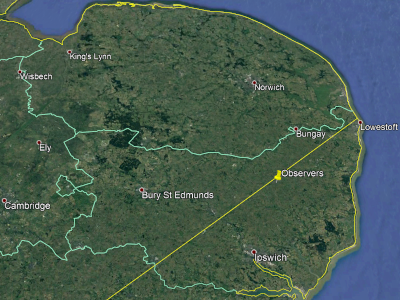 Figure 1. Graze track. Track in Google Earth.
Figure 1. Graze track. Track in Google Earth.Figure 2 illustrates limb profile information for the event (from Occult 4.0). The dotted curve represents the mean lunar limb; it appears elliptical rather than circular because the vertical scale has been stretched to show limb features more clearly. The red line represents the true limb (based on survey data obtained by the Lunar Reconnaissance Orbiter, launched in 2009) and the blue line the location of the observers.
The graze was a northern limb event. The northern limb is less mountainous than the southern. As a result, for northern limb grazes, the location of observers with respect to the nominal graze line can be critical if multiple disappearance/reappearance events are to be witnessed. Indeed, inspection of the limb profile for the graze indicates that the observers needed to be within 1.1 to 1.6 km south of the nominal graze line in order to maximise the chances of witnessing multiple events. The chosen observing site, off Tannington Long Road, lay 1.47 km south of the nominal graze line, towards the southern limit of the acceptable range.
Table 2 and figure 3 compare the disappearance/reappearance events predicted from the limb profile with the observer’s empirical timings. Agreement between observation and theory is generally very good, better than has been the case for recent grazes.
| James | Andy | Mike | Alan | Theory |
| 02:31:03 MD | 02:31:01 MD | 02:31:08 D1 | 02:31:04 D1 | 02:31:00 MD |
| 02:31:07 D1 | 02:31:05 MD | 02:31:22 R1 | 02:31:06 R1 | 02:31:04 D1 |
| 02:31:23 R1 | 02:31:09 D1 | 02:31:42 D2 | 02:31:08 MD then D2 | 02:31:20 R1 |
| 02:31:43 D2 | 02:31:20 R1 | 02:31:53 R2 | 02:31:23 R2 | 02:31:39 MD |
| 02:31:51 R2 | 02:31:40 D2 | 02:31:55 D3 | 02:31:43 D3 | 02:31:40 D2 |
| 02:31:52 D3 | 02:31:49 R2 | 02:31:56 R3 | 02:31:53 R3 | 02:31:47 R2 |
| 02:31:56 R3 | 02:31:51 D3 | 02:31:59 D4 | 02:31:55 D4 | 02:31:49 D3 |
| 02:31:59 MD | 02:31:55 R3 | Subsequent events not timed | 02:31:57 R4 | 02:31:50 R3 |
| 02:32:02 MD | 02:31:57 D4 | - | 02:32:00 D5 | 02:31:51 D4 |
| - | 02:31:58 R4 | - | 02:32:01 R5 | 02:31:52 R4 |
| - | 02:32:01 D5 | - | 02:32:02 D6 | 02:31:56 MD |
| - | 02:32:03 R5 | - | 02:32:03 R6 | 02:32:00 MD |
Table 2. Event timings. (M=momentary, D=disappearance, R=reappearance.)
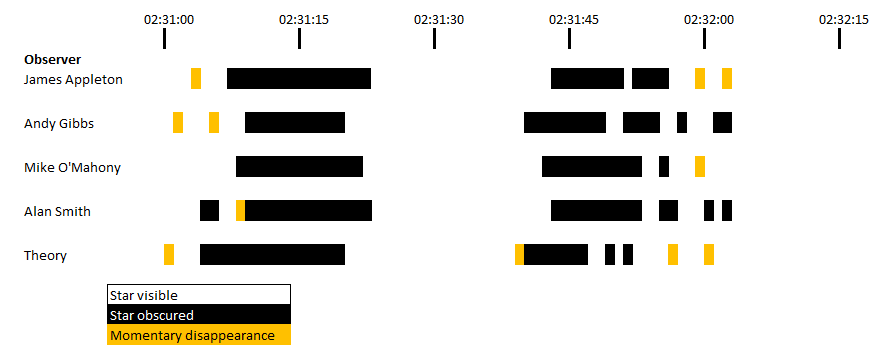 Figure 3. Event timings.
Figure 3. Event timings.
[1]
Unfortunately, when the phone went to sleep (after 3 minutes) the broadcast stopped, so Alan had to continually refresh the phone screen. Next time he'll turn off sleep...
Star
ZC1522 (H50950, T841-1486-1)
The third and final grazing lunar occultation of the year visible from East Anglia occurred during the early morning of Saturday 09 December. The star, ZC1522 in Leo, was relatively faint, but nonetheless worth observing. I used the freeware software package Occult to calculate the graze track for the event; this crossed Suffolk from NW to SE, passing only some 17 km from Orwell Park Observatory (see figure 1). Alan Smith used Google Earth to identify potential observing locations, offset south from the nominal track to maximise the chances of observing multiple events, and, on 30 November, visited prospective sites. He found the best site to be at the eastern edge of Rendlesham Forest, in Butley, an isolated location just off a quiet public road, unlikely to be disturbed by passing traffic.
The first two grazes which members of OASI attempted to observe during 2017 (in February and October) were clouded out. Hopes were therefore high that, by the law of averages, the weather for the final event of the year would be better and, indeed, it turned out to be so. In the days immediately preceding the graze, the forecast was consistently for low temperatures, clear skies and occasional gusty wind. At 22:00 on the evening before the graze, prospective observers attended the customary go/no-go audioconference and the decision to proceed with observations was an easy one.
When I arrived at the observing site, shortly after 05:40, Alan and Andy Gibbs were already there. Mike O’Mahony, Joe Startin and Martin Cook arrived in sequence, shortly thereafter. Martin suffered a more stressful journey than the others, arriving first at the wrong site and being forced to turn around by a ploughed field, hitting some wire fencing while undertaking the manoeuvre. Doh, don’t you just love it when the satnav malfunctions! On arrival, the sky was clear and transparent, dominated by the Moon and Jupiter, in Libra, shining at magnitude -1.7 at altitude 8° above the south-east horizon. There were occasional gusts of wind, strong enough to cause telescope shake.
I took up position immediately in the lee of the forest, providing shelter from the wind, and the other observers located themselves on the other side of the road, sheltered by their vehicles. Unfortunately, the viewfinder on Joe’s telescope turned out not to work reliably, in consequence of which he was unable to align the instrument. He was unable to undertake any meaningful observations until after the graze, by which time he obtained a good view of the star with the Moon nearby but receding. The other observers fared rather better and, by 06:15, had set up their equipment and were following the Moon as it approached the star: Alan, Martin and Andy were observing visually; Mike and I videoing the event. The observers hoped for multiple disappearance/ reappearance events as suggested by the predicted lunar limb profile - see figure 2, calculated for longitude 1.5°E on the track. (In the figure, the blue line represents the observing location and the red line the forecast limb profile visible there.)
By 06:30, the event was over. Andy, Alan and Martin had each observed at least two disappearance/reappearance events and Mike and I had captured video footage for later analysis. By the end of the graze, dawn was breaking, and the south-eastern horizon showed a lovely colour transition (captured in the background of the team photo, figure 6, below). Jupiter, having risen to an altitude of 22°, so prominent when the observers arrived on site, appeared less intense against a brightening sky. The observers packed up and, following the obligatory team photo, headed for home.
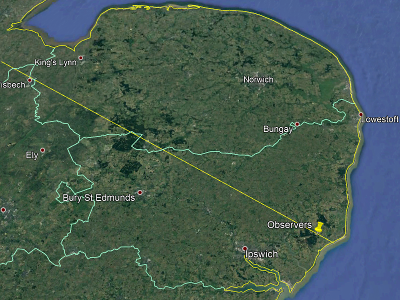 Figure 1. Graze track. Track in Google Earth.
Figure 1. Graze track. Track in Google Earth.
Table 1 lists the observers, instruments and approaches to timing the event.
Observer
Equipment
Timing Method
Table 1. Observers, instruments and timing methodologies.
Both visual and video observations were difficult as the star was relatively faint, and the event took place entirely against the bright limb, with considerable associated glare. Figure 4, a still from my video, shows the limb close to the star, illustrating well the difficulty caused by glare: for the star to be visible, the video had to be set such that most lunar features were bleached out. The difficulties resulted in a wide spread of recorded timings.
Mike based the selection of exposure time and ISO for his video recording on his previous experience of videoing grazing occultations. Unfortunately, in the video, the star is barely visible. This was my first effort at videoing a grazing occultation and, perhaps through beginner’s luck, I fared better than Mike, achieving a reasonable balance between over-exposure of the lunar surface and the need to record the star itself. However, due to glare, the star could only be seen intermittently against the limb, and it was not possible to estimate event times. Nevertheless, in broad terms my video provided broad confirmation of the event times reported by Alan.
Analysis of my video combined with Alan’s verbal observing notes made it possible to identify the lunar features associated with the extended disappearance events which he reported. These are highlighted in figure 5 (a still extracted from my video, during which, unfortunately, the star itself is invisible). The lunar libration angles correspond to a minor north-south rotation of the disk while bringing the eastern limb to its best orientation for viewing. The disappearance/ reappearance events were associated with the southern limb craters Malapert and Amundsen.
Table 2 and figure 3 illustrate theoretical and empirical timings. As is often the case, there is little agreement between the various observers and theoretical predictions.
| Alan | Martin | Andy | Theory |
| 06:24:38 D1 | 06:24:30 D1 | 06:24:36 D1 | 06:26:48 D1 |
| 06:25:02 R1 | 06:24:59 R1 | 06:25:22 R1 | 06:26:56 F |
| 06:25:30 D2 | 06:26:01 D2 | 06:26:09 D2 | 06:27:18 start of multiple events |
| 06:25:50 R2 | 06:27:25 R2 | 06:29:39 R2 | 06:27:23 R1, end of multiple events |
| 06:26:01 D3 | 06:27:33 D3 | - | 06:27:34 D2 |
| 06:27:20 R3 | 06:28:50 R3 | - | 06:27:38 R2 |
| 06:27:35 D4 | - | - | 06:27:47 D3 |
| 06:27:37 F | - | - | 06:27:57 R3 |
| 06:27:28 R4 | - | - | - |
| 06:27:50 D5 | - | - | - |
| 06:28:03 R5 | - | - | - |
Table 2. Event timings. (D=disappearance, R=reappearance, F=flash.)
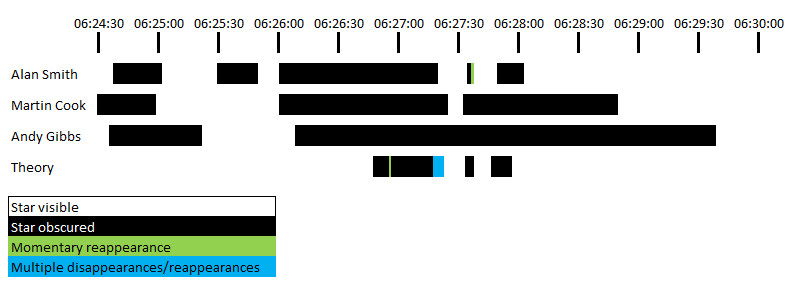 Figure 3. Event timings.
Figure 3. Event timings.
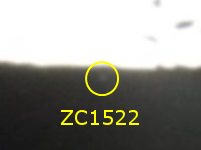 Figure 4. Glare from the lunar limb.
Figure 4. Glare from the lunar limb.
Star
V4190 Sgr (ZC2697, H91132, T6279-1453-1)
The second grazing lunar occultation of 2017 was predicted to take place during the early evening of Wednesday 25 October. Astronomical circumstances of the event were not ideal: the altitude of the star was only 13° and, at magnitude 6.5, it was expected to be only marginally visible against the glare of the moon during astronomical twilight.
I used the freeware software suite Occult to illustrate the topography of the lunar limb and to produce a plot in Google Earth of the track of the event across the Earth's surface. The track was predicted to pass north of Ipswich close to the village of Finningham. I identified four possible observing sites, offset from the nominal track to maximise the chances of observing multiple events, and then undertook a reconnoitre. This revealed a clear first choice and second choice site, and enabled me to eliminate the remaining two. The preferred site, just off the B1113 between Finningham and Walsham Le Willows, was located on a private farm track (see figure 1). It could be muddy if wet but provided an unobstructed southern view. The landowner readily granted permission to access the site. A member of his family was studying astronomy at school and so the family was invited to attend the event.
Despite the necessity of a journey of some 50 km from Ipswich during rush-hour, half a dozen observers were willing to attend the primary site with David Murton attempting an observation from a separate site located at a relative's house close to Norton (about 11 km distant). At 4.00pm, the prospective observers attended a go/no-go conference call. The sky conditions at the time and the weather forecast were very favourable, so the decision to proceed with operations was unanimous.
I set off for the site at 5.00pm, arriving at about 5.45pm to meet James Appleton and Matt Leeks who had arrived some minutes earlier. The sky was still very light and almost totally overcast - so much for the weather forecast! Some breaks in the cloud low in the west gave a spectacular, almost apocalyptic, sunset (see figure 3 below). In time, the other observers also arrived: Mike O'Mahony, Andy Gibbs and Joe Startin.
Such were conditions that the observers didn’t begin to set up telescopes until everyone had arrived and then more in hope than expectation. Those with computer-controlled instruments were unable to complete alignment until breaks in the cloud briefly revealed alignment stars. The landowner's family arrived by about 6.15pm just as the cloud broke briefly high overhead. They were treated to a clear view of M57 (the Ring Nebula) but the Moon remained covered by thick cloud. As the time of the graze approached there were only tantalising, fleeting glimpses of the Moon! The time of the graze passed and the Moon remained obscured. By 18:16 (only nine minutes late!), the sky had largely cleared, both the Moon and star were clearly visible, and Saturn could be seen low in the west. Mike O'Mahony showed the landowner's family the Moon at both high and low magnifications. The Moon remained visible on the journey home, only becoming clouded over again by about 19:30.
Figure 2 shows the the limb profile for the event, calculated for longitude 1.0°E on the track. The blue line represents the observing location, and the red line the forecast limb profile visible there.
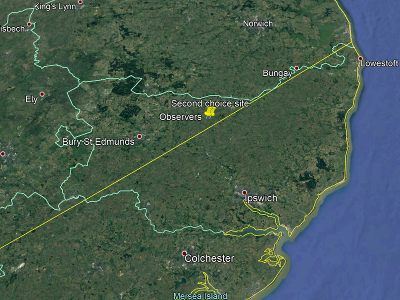 Figure 1. Graze track. Track in Google Earth.
Figure 1. Graze track. Track in Google Earth.For the first time in 40 years of grazing occultation expeditions by members of OASI, there was to be a footnote to events. A group of cars parked in a remote location can cause concern, so if observing from private land I always obtain permission from the landowner and, if from public land, ensure that nearby householders are informed of the event. On this occasion, a "concerned member of the public" reported the gathering to Suffolk Constabulary, taking note of the number plate of one of the vehicles. The police were "unable to attend site immediately" and waited for the observer to return home before calling on him. Explanations were provided and all is well.
Star
81 Tau (ZC678, H21039, T1265-1174-1)
A grazing lunar occultation of the star 81 Tauri was predicted for the evening of Sunday 05 February 2017. Astronomical circumstances were good as the star is relatively bright and the occultation a southern limb event. Several members of OASI, one from DASH and one from LYRA decided to attempt an observation.
I used the freeware software package Occult to calculate the graze track and limb profile. Using Google Earth and OS maps, I then identified a shortlist of half-a-dozen observing sites, offset from the nominal graze track to maximise the chances of observing multiple events, choosing them to be off-road, away from sources of light pollution and with an unobstructed southern aspect. The site eventually chosen, a car park off Lodge Road, Walberswick, was proposed by David Murton (see figure 1). The site had been used by members of OASI on a previous occasion, so a site survey was not required on this occasion.
With days to go, the weather forecast was for cloud in the early evening of the graze with clear skies approaching from the west. At 4.00pm on the day, we held the go/no-go telephone conference, and the decision not to proceed with an observing trip was an easy one, as there was only an outside chance that a clear weather window would arrive in time. Indeed, solid cloud cover persisted for the rest of the night.
Figure 2 shows the limb profile for the event, calculated for longitude 1.5°E on the track. The blue line represents the intended observing location, and the red line the forecast limb profile presented there.
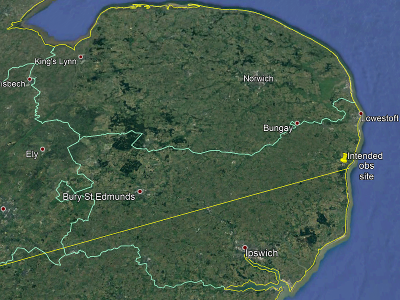 Figure 1. Graze track. Track in Google Earth.
Figure 1. Graze track. Track in Google Earth.Star
H63099 (T4953-1027-1)
The last grazing occultation of 2016 was predicted to take place in the early morning of Thursday 22 December. Circumstances were not ideal: the star was likely to be on the limit of visibility against the glare of the Moon and the event occurred in astronomical twilight low in the south-western sky. Undeterred, I used the freeware software package Occult to calculate the graze track and to produce a detailed lunar limb profile. Google Earth showed the track to pass south of Ipswich into mid-Essex (see figure 1). Experience has taught that Essex is a difficult county within which to find good observing sites for grazes but, fortunately, the track passed close to the local authority office on the outskirts of Weeley and OASI Chairman, David Murton, was able to negotiate permission for members of OASI to observe from the car park. The limb profile showed that the site was offset from the nominal graze track so as to provide a reasonable prospect of observing multiple events.
All potential observers attended Orwell Park on Wednesday evening so we abandoned the customary go/no-go teleconference in favour of a face-to-face meeting. The prospect of a return journey of over 60 km during the morning rush hour discouraged many and, although both TV weather forecasts and infrared satellite images showed promise, weather conditions were uncertain. The result was I was the only person willing to attempt the observation!
An injury to my hand the previous week meant that I was unable to load my 250 mm Dobsonian-mounted Newtonian reflector into the car, so instead I packed my Canon 1100D camera with a 400 mm F6.3 telephoto lens with three times converter (effective focal length approximately 1900 mm) and tripod to try to capture some images. I left for Weeley at 4.30am with only light cloud and sparse ground mist. On arriving on site, there was a light haze; the Moon appeared higher in the sky than I had expected and was closely attended by Jupiter and Spica.
As the time of the graze approached, the sky was clearing although there were some bands of light cloud. I fired off shots at different ISO values and exposure times and hoped for the best. I could not discern the star in the camera using live view mode, so was not optimistic of success. Two close-ups of the lunar southern limb are shown below, both showing features on the limb: at 06:32, ISO 800, 1/10 s exposure and at 06:48, ISO 6400, 1/10 s exposure. Careful examination of all images, applying contrast stretches, failed to reveal any evidence of the star. To gain some idea of the sensitivity of the camera/lens combination, I took pictures of Jupiter and the four Galilean moons: I found that a 1/25 s exposure at ISO 6400 showed clearly Io, Europa and Ganymede, respectively at magnitudes 6.0, 6.1 and 5.6, but Callisto at magnitude 6.8 was only just visible. (Magnitudes are from the NASA Horizons ephemeris.)
I packed up and left before staff came to work and asked my business. I arrived home to a clear blue sky.
Figure 2 shows the limb profile for the event. It is calculated for longitude 1.0°E on the track. The blue line represents the observing location, and the red line the forecast limb profile visible there.
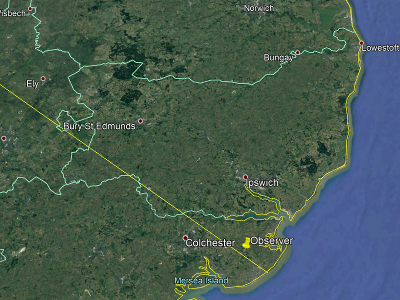 Figure 1. Graze track. Track in Google Earth.
Figure 1. Graze track. Track in Google Earth.Star
20 Gem (ZC1002, H31156, T1333-1680-1)
A trip to Snape Maltings is always a welcome event and my journey there at half-past four on the morning of Friday 21 October 2016 was no exception. The occasion was the graze of the star 20 Geminorum in astronomical circumstances which were reasonable, although not outstanding.
Alan Smith had surveyed potential locations some weeks previously, searching for an isolated site (to reduce the chances of being disturbed) offset suitably from the nominal graze track to maximise the chances of observing multiple events. He finally selected a site off a quiet road west of Snape Maltings, offering a large, flat, sandy area, with a good southern aspect above a line of trees.
When my alarm clock sounded at 4.00am, there was much patchy cloud and the Moon was only intermittently visible, so luck would clearly be a major determinant of whether observations would be possible. Having loaded the car the previous evening, I was able to leave home at 4.15am. Unsurprisingly, traffic was very light, enabling speedy progress, and I arrived at the observing site at 4.50am, to find Alan and Mike O’Mahony already there. Unfortunately, rain in recent days had turned the ground swampy, and the site, with many large puddles and much mud, appeared less suitable than it had done during the site survey! Alan and Mike supervised manoeuvring, enabling me to park on an island of dry land and exit the car without needing Wellington boots.
The sky by now was a lot cloudier, with stars only occasionally visible. We agreed to wait, to see what the weather would do, before setting up equipment. Shortly after 5.00am fine, misty rain began and, a few minutes later, Martin Cook arrived. We chided him that he had brought the rain. Alas the rain did not stop; instead, at 5.20am, it became very heavy and we decided to give up and return home.
By 6.00am (05:00 UT), the predicted time of first contact of the graze, I was at home looking at the sky. To my intense frustration, the rain had stopped and the sky was clear and very transparent (the rain having washed dust out of the atmosphere).
Below, figure 1 shows the graze track and observing location. Figure 2 shows the limb profile for the event, calculated for longitude 1.5°E on the track. The blue line represents the observing location, and the red line the forecast limb profile visible there.
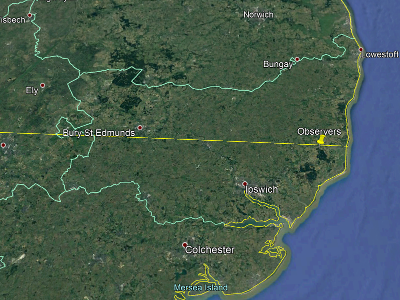 Figure 1. Graze track. Track in Google Earth.
Figure 1. Graze track. Track in Google Earth.Star
H1397 (T2-1127-1)
The second grazing occultation of 2016 was of the star Hipparcos 1397 in the early evening of Thursday 11 February. Astronomical circumstances of the graze were not ideal:
However, at least the event took place at a convenient time, albeit during the rush hour.
As usual, I used the freeware Occult software package to predict the circumstances of the event. The graze track crossed the region through Silver End, Stanway, Colchester, Little Bromley, Wrabness, Shotley Gate and Felixstowe (see figure 1). I rapidly discounted the chance of finding an observing location along the two brief portions of the track over dry land in Suffolk and concentrated instead on Essex, a county within which it has often proven difficult to find suitable locations. Fortunately, the track passed close to the home of a friend who, in turn, knew a farmer with land even closer to the line. The farmer readily granted permission to observe from his property. The limb profile indicated that the offset of the site from the graze track would result in a single momentary disappearance.
I set off for the site at 16:00 and almost immediately joined a huge traffic jam on the A12 southbound, as the road was blocked at Martlesham! I eventually cleared the jam and, with the rest of the trip uneventful, met my friends and proceeded to site, arriving at about 17:30. The sky was still very light with only Sirius and the Moon (with lots of earthshine) visible. An ominous bank of cloud was lurking to the west.
I set up my 250 mm Dobsonian-mounted Newtonian reflector and, with a 25 mm eyepiece (about 60x magnification), initially failed to find the star. However, by 17:45 I had acquired the star and it looked as if the observation might be successful. My friends had brought a 50 mm refractor which (just) showed the star. We were then joined by the farm owner and family plus half a dozen members of his staff. They uttered all the usual oohs and aahs on seeing a large telescope for the first time! With almost half an hour to go, I invited the "audience" to see the rather beautiful, young, crescent moon through the reflector. Thereafter, my friends were able to field most simple astronomical questions whilst I concentrated on the forthcoming graze.
At 18:00, the first cloud covered the Moon, but it quickly moved on. I then increased the magnification to about 150x (10 mm Plössl eyepiece) and saw that the star was, in fact, an obvious visual double [1].
As the time of the graze approached, the cloud grew ever thicker. At 18:11, the Moon and star were completely obscured. However, at this time, a passage of the ISS almost directly overhead was visible, eliciting more appreciative noises from the assembled throng! At 18:17 the Moon and star appeared through cloud. The star then disappeared, due to cloud, at 18:18:25 and, apart from the occasional momentary appearance due to gaps in the cloud, remained obscured until 18:19:33. Theory indicated that the star would be occulted three times by the lunar limb during the period 18:19:01 - 18:19:52; I missed the first event due to cloud and table 1 lists my timings of the second and third events. My timings refer to the A component of the star; I did not observe events involving the B and C components. By 18:20:25 the star appeared clear of the limb: the spectacle was over.
So despite the cloud, the observation was a success. Afterwards, I invited the group to look at the Moon under a variety of magnifications, then we observed the Orion Nebula, Sirius, the Pleiades, and a few terrestrial objects. There were many more oohs and aahs! Cloud terminated our observations.
Below, figure 2 shows the limb profile for the event, calculated for longitude 1.0°E on the track. The blue line represents the observing location, and the red line the forecast limb profile visible there.
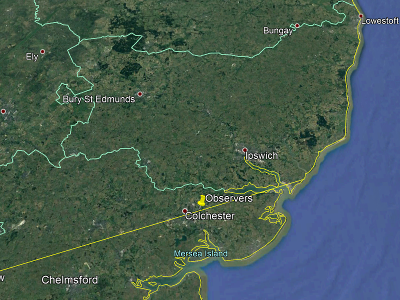 Figure 1. Graze track. Track in Google Earth.
Figure 1. Graze track. Track in Google Earth.Meanwhile, at his home observatory in Bucklesham, approximately 8.5 km north of the graze line, OASI Chairman David Murton photographed the event using a Canon 60Da camera coupled to a Skywatcher 200PDS on NEQ6 mount. Three of David's images are below:
Figure 3. 17:48:00. With half an hour until the graze, the photograph shows the star as a triple.
Figure 4. 18:16:52. The "B" component of the star about to be occulted.
Figure 5. 18:18:50. The "B" component of the star is occulted, but the "A" component is not and appears to glide close to the limb, approaching the bright cusp.
The lunar libration corresponds to a minor north-south rotation of the visible disk while bringing the western limb into a good viewing angle. The initial disappearance of the star was in the crater Hermite on the northern limb. Table 1 and figure 6 show my empirical event timings and theoretical predictions. There is good agreement between theory and observation for the close pair of disappearances which occurred after I ceased to be clouded out.
| Alan | Theory |
| Clouded out | 18:19:00 D1 |
| 18:19:12 R1 | |
| 18:19:37 D2 | 18:19:38 D2 |
| 18:19:41 R2 | 18:19:43 R2 |
| 18:19:44 D3 | 18:19:47 D3 |
| 18:19:50 R3 | 18:19:52 R3 |
Table 1. Event timings. (D=disappearance, R=reappearance.)
 Figure 6. Event timings.
Figure 6. Event timings.
[1]
In fact, the star is a triple, with the magnitude 7.7 main component accompanied by fainter components of magnitude 10.2 at a distance of 3.6 arc-sec and 11.8 at a distance of 103.0 arc-sec.
Star
54 Tau (γ Tau, Hyadum I, ZC635, H20205, T1264-1009-1)
The first grazing occultation of 2016 was of the star 54 Tauri in the early evening of 19 January. Circumstances of the graze were favourable:
We used the freeware Occult software package to predict the circumstances of the graze. The track (see figure 1) crossed Suffolk from Stowmarket, via Debenham, Framlingham, Yoxford and out to sea at Southwold; the limb profile (see figure 2) suggested that a site approximately 1.7 km S of the nominal track would provide the best chance of observing multiple disappearance/reappearance events. Using Google Earth, we identified two potential observing sites near Dunwich and four in the vicinity of Framlingham. Alan then carried out a reconnaissance, and, after discussions with a landowner, obtained permission to observe from a concrete hard standing off a private farm track 3 km east of Framlingham. The site was excellent, offering a large, clean, dry space with unobstructed views, no passing traffic and no significant sources of light pollution. The landowner promised to visit the observers on site before the graze; the promise turned out to be most fortuitous!
The go/no-go audioconference for potential observers was held at 5.00pm on the day of the graze and was attended by James, Alan, Michael O’Mahony, Andy Gibbs and Joe Startin. At this time there was much patchy, thick cloud, and little prospect of any improvement. Michael, Andy and Joe decided, unsurprisingly, not to travel to site to attempt to observe the graze. In view of the landowner’s intention to visit the observers on site, Alan felt obliged to be there in person to meet her, even if there was no realistic prospect of observing. James, his observing equipment already packed, decided to follow suit. After the audioconference, Alan briefed Martin Cook and David Payne, who had been unable to join, and both decided not to travel to the graze site.
James arrived at 18:25 (after getting lost in the suburbs of Framlingham!) and Alan arrived five minutes later. On arrival, it was apparent that observations could be very difficult due to considerable patchy cloud. However, undeterred, the observers set up telescopes as follows:
Alan was observing by 18:40; James by 18:50. James was first to find the star through the cloud, with Alan doing so a couple of minutes later. By 19:00, the clouds had grown denser, with fewer gaps. Some patches of cloud were sufficiently dense as to appreciably dim both the star and the Moon. Conditions then deteriorated gradually until, by 19:20, cloud was essentially continuous and, in places, very thick. Much to our amazement, conditions then dramatically improved, with the cloud cover becoming thinner and clear patches becoming more extensive. By 19:25, the remaining clouds were thin and generally caused little discernible dimming of the image in the eyepiece!
As the Moon approached ever closer to the star, shortly before the moment of first disappearance, the latter appeared for a while to lie inside the geometric lunar circumference. Later, consultation of a large scale lunar map [1] provided an explanation. The lunar libration at the time of the graze involved a north-south rotation almost to the maximum extent possible, rotating the northern polar regions towards the observers, and the southern polar regions away. This placed the crater Cabaeus [2] at the expected apparent point of contact of the star and the Moon, and the star thus appeared for a while to shine across the rim of the crater, inside the geometric lunar circumference.
We both forgot to bring cameras, and the traditional team photo at the end of the observation had to be taken with a mobile phone, the subjects illuminated by the headlights of Alan’s car. The results - figure 3 – are not pretty!
Figure 2 shows the limb profile for the event, calculated for longitude 1.25°E on the track. The blue line represents the observing location, and the red line the forecast limb profile visible there.
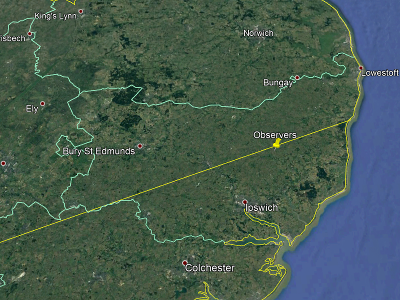 Figure 1. Graze track. Track in Google Earth.
Figure 1. Graze track. Track in Google Earth.
Alan recorded his observations on two voice recorders (in case of failure) synchronised verbally to the "Rugby clock" [3]. He analysed the recording off-line to provide estimates of event times. James also used a voice recorder (only one) but estimated event times using a multi-lap stopwatch synchronised to the "Rugby clock". Table 1 lists the theoretical and empirical event times. Both observers recorded three main disappearance/reappearance events, with very accordant event times, which also agree well with theoretical predictions.
| James | Alan | Theory |
| 19:33:13 D1 | 19:33:13 MD | 19:33:15 MD |
| 19:33:48 F | 19:33:15 D1 | 19:33:18 D1 |
| 19:33:59 R1 | 19:33:48 F | 19:33:47 R1 |
| 19:34:28 D2 | 19:33:59 R1 | 19:33:50 D2 |
| 19:34:36 R2 | 19:34:28 D2 | 19:34:00 R2 |
| 19:34:39 D3 | 19:34:36 R2 | 19:34:29 start of multiple events |
| 19:35:07 R3 | 19:34:39 D3 | 19:34:40 D3, end of multiple events |
| - | 19:35:07 R3 | 19:35:01 MR |
| - | - | 19:35:07 R3 |
Table 1. Event timings. (D=disappearance, R=reappearance, F=flash.)
 Figure 4. Event timings.
Figure 4. Event timings.
[1]
Philip’s Moon Map, ISBN 0-540-01208-4.
[2]
Selenographic coordinates 84.9°S, 35.5°W, named after the Italian mathematician, philosopher and astronomer Niccolo Cabeo (1586-1650).
[3]
Transmission of the broadcast MSF time signal was moved from Rugby to Anthorn in Cumbria in 2007, but the term “Rugby time” appears to be here to stay.
Star
ZC618 (H19519, T1251-0673-1)
A grazing occultation. Or was it a close encounter....?
The fourth grazing occultation of 2015 occurred during the early hours of the morning of Friday 02 October. The circumstances were not ideal:
However, we made plans to observe. In recent months, we've become familiar with the freeware Occult software, which calculates the graze track in Google Earth and shows a detailed plot of the lunar limb topography. Examining the track (figure 1), we noted that it passed within only 3 km of Orwell Park Observatory; however, upon inspection of the predicted limb profile (figure 2), we decided that a location displaced approximately 800 m north would provide the best chance of seeing multiple disappearance/ reappearance events. As usual, we searched for an observing site far from inhabited areas, main roads, light pollution and the chance of human interference and eventually selected a spot between Butley and Capel St. Andrew, adjacent to a public footpath along the boundary of a field. Alan checked the site in advance and found that it was clear of obstructions and provided easy vehicular access and a firm surface. We also selected a secondary site in case of difficulties with our first choice.
We scheduled a go/no-go conference call for 10.00pm (BST) on 01 October. The weather on the preceding days had been good and a clear sky was forecast for the crucial time. However, at the time of the audioconference, the Moon was obscured by thick clouds and it was raining in Felixstowe, and only four potential observers joined to discuss attending the event (Mike O’Mahony, Martin Cook, James and Alan). Mike decided that he would forego the opportunity but the other three decided to get up two hours before the graze to check weather conditions and make a final go/no-go decision.
So, off to bed for a couple of hours sleep... Alan was awakened at 01:00 by the alarm clock and bright moonlight streaming through the window. Martin and James phoned him in quick succession and the three arranged to meet at the observing site at 02:00. Alan set off at 01:30 (having loaded the car the previous afternoon). Driving out of Grundisburgh he quickly encountered patchy mist, but the sky was clear. He arrived on site just before 02:00 to be joined almost immediately by Martin and James. The site was perfect, with a clear view of the Moon and no discernible light pollution. There was however, a mysterious "totem", consisting of a large white canvas draped over a tall pole, seemingly guarding the entrance to the field!
The observers reversed their cars along the boundary of the field then began to set up telescopes as follows:
Immediately after setting up the telescopes, Martin walked past an innocent-looking plastic pole at the edge of the field only to trigger a proximity alarm which sounded for a few seconds before the quiet of the night resumed. In fact, the alarm sounded intermittently, apparently at random, throughout our time at the spot. When the alarm was quiet, in the distance we could discern the groaning of deer in rut.
By 02:10, Alan, using 150x magnification, was first to acquire the star, dimly visible through bright haze surrounding the Moon. Some ten minutes later, James too had acquired the star and both he and Alan began following the lunar limb closing upon it. Martin, however, suffered all sorts of problems at this time! Initially, he found that his finder was badly out of alignment; this seemingly minor problem was compounded when the telescope refused to drive without going through an alignment procedure - which was not feasible until the finder was aligned. Eventually succeeding in aligning the telescope and coaxing it into driving, Martin located the star approximately 10 minutes before it was due to disappear. Unfortunately, he then made a serious mistake and misjudged the time remaining until the star disappeared, left the eyepiece to start his voice recorder, located in his car, only to hear cries from his colleagues that the star had disappeared!
James too experienced difficulties. Having located the star with confidence, he ignored it and concentrated instead on sketching features on the lunar limb. Unfortunately, the intended quick sketch turned into a major distraction and, by the time it was complete, he could no longer find the star due to glare. Fortunately, Alan saved the day by calling out the position of the star in relation to a double crater near the limb, and James was able to find it again. Disaster averted! However, by this time, the first disappearance event was imminent and James did not have time to fetch his multi-event stopwatch and had to be content with calling out observations for later analysis; fortunately, both Alan’s and Martin’s voice recorders were sensitive enough to catch his comments.
Alan too suffered a problem, although fortunately, only a minor one. His secondary voice recorder failed! Fortunately, the primary unit worked flawlessly.
During the disappearance and reappearance of the star, there was some glare surrounding the Moon. This made the observation difficult for Alan as he found the star almost invisible against the illuminated lunar limb. James experienced no such difficulty and was able to follow it through the entirety of the graze.
After taking the obligatory team picture (figure 3), we packed up and set off past the "gate guardian" to return to our homes.
What Alan omitted to tell his colleagues was that the site was only metres from the infamous location where, at 0300 hrs on 26 December 1980, an alien spacecraft allegedly landed close to RAF Bentwaters (at the time leased to the USAF) - the so called Rendlesham Forest UFO incident (see e.g. [1]). In our case, ghostly wraiths standing at the entrance to the observing site, electronic surveillance devices, ghastly noises, swirling mists and multiple equipment failures... Who was watching what...?
Figure 2 shows the limb profile for the event, calculated for longitude 1.5°E on the track. The blue line represents the observing location, and the red line the forecast limb profile visible there.
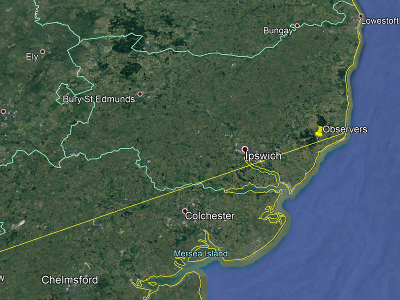 Figure 1. Graze track. Track in Google Earth.
Figure 1. Graze track. Track in Google Earth.
The star appeared to disappear, reappear, then disappear again before the limb finally moved away. Alan's and James's timings of the events were within a second of one another. Table 1 lists the empirical timings together with theoretical predictions. Figure 4 shows the timings graphically. Empirical timings associated with the initial disappearance accord well with theory. However, for the second (longer) disappearance, the theoretical limb profile appears to lie inside the empirical for the first 20 seconds.
| James | Alan | Theory |
| 02:48:03 D1 | 02:48:03 D1 | 02:48:03 D1 |
| 02:48:14 R1 | 02:48:15 R1 | 02:48:12 R1 |
| 02:48:22 D2 | 02:48:23 D2 | 02:48:21 Start of multiple events |
| 02:49:30 R2 | 02:49:30 R2 | 02:48:43 D2, end of multiple events |
| - | - | 02:48:55 MR |
| - | - | 02:49:27 R2 |
Table 1. Event timings. (M=momentary, D=disappearance, R=reappearance.)
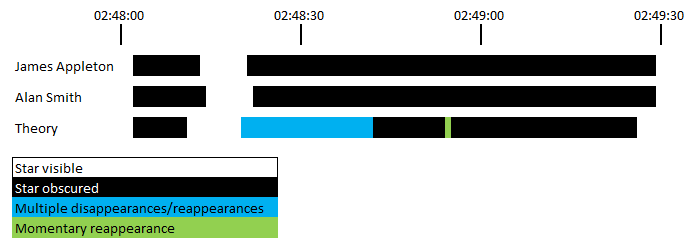 Figure 4. Event timings.
Figure 4. Event timings.
The lunar libration at the time made craters on the northern limb more easily visible. The star disappeared behind the features of crater Rozhdestvenskiy [2], at the lunar North Pole on the usually-invisible side of the disk.
[1]
Jenny Randles, UFO: Crash Landing? Friend or Foe? - True Story of the Rendlesham Forest Close Encounter, Cassell, 1998.
[2]
Antonín Rükl, Atlas of the Moon, Hamlyn, 1990.
Star
ZC1183 (H38276, T791-0914-1)
H37685 (T1361-0076-1)
For the first time in the history of OASI's efforts to observe grazing occultations (41 years and counting), two events were predicted to occur during a single night. The evening in question was Saturday-Sunday 28-29 March 2015 and, although the graze tracks passed some distance south of Ipswich, this was clearly an opportunity not to be missed!
James Appleton and I performed our usual double act to identify potential observing sites. James used Occult 4.0 to calculate the graze tracks, producing them as .kml files to be overlaid directly on Google Earth digital maps (see figures 1 and 3). Using Google Earth and OS maps we compiled a shortlist of half-a-dozen potential observing sites, offset from the nominal graze tracks to maximise the chances of observing multiple events, choosing them to be off-road, away from sources of light pollution and with unobstructed southern aspect. The sites chosen were in the vicinity of Witham in north Essex. I surveyed the sites a couple of weeks prior to the event, quickly finding them all to be unsatisfactory. For the first graze (Hip 37685), the best site was close to a busy road with no shielding from traffic; and for the second, although the perfect location existed on a farm, unfortunately the date coincided with the farm manager's birthday celebrations, so the site was likely to be very busy! Other sites were generally gated with no access.
Back to square one! Checking the tracks again on Google Earth, I identified further possible sites: for the first graze, a location close to Abberton Reservoir and for the second, two in the Dengie Marshes. I negotiated the A12 once more to inspect the reservoir site. We would have to park on one side of a little-used road and transfer our equipment to the other side, through a gate onto a paved path close to the reservoir. Although the site was close to passing traffic, it was screened by a beech hedge, and overall appeared pretty good. The sites on the Marshes were a further 50 km away so I decided to leave the survey there until the night of the graze (just like the old days before Google Earth)!
The night of the grazes coincided with the second evening of our 2015 Orwell Park Observatory Open Weekend, where some of our potential observers were on duty. Clear skies on the evening before the graze provided excellent conditions for visitors to the Observatory and gave us hope for the following night. Unfortunately, the day of the grazes was overcast with persistent drizzle. At 5.00pm on 28 March we held a go/no-go telephone conference and decided to postpone our decision for an hour and a half, as satellite images indicated that a window of clear skies, although accompanied by gusty winds, would open just in time for the observation. At 6.30pm, against my protestations that the weather window would arrive, the group decision was that the weather wasn’t good enough and that our observations should be abandoned.
Of course, exactly as I had predicted, the weather window did open and, at the time of the first graze, the Moon and star were clearly visible! However, a bitterly cold north-easterly wind had also (as forecast) sprung up, and would likely have caused considerable difficulty, both sites being in exposed positions.
Figures 2 and 4 show the limb profiles. The figures are calculated for locations on the graze track; figure 2 for longitude 1.0°E and figure 4 for longitude 0.75°E. The blue lines represent the intended observing locations, and the red lines the forecast limb profiles visible there.
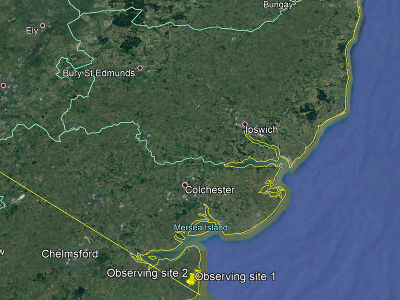 Figure 1. ZC1183: graze track. Track in Google Earth.
Figure 1. ZC1183: graze track. Track in Google Earth.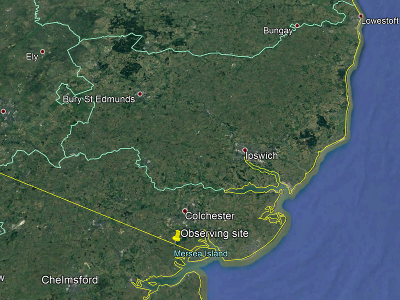 Figure 3. H37685: graze track. Track in Google Earth.
Figure 3. H37685: graze track. Track in Google Earth.Star
ZC970 (H30218, T1319-2077-1)
A grazing lunar occultation of ZC970 was predicted for immediately before midnight on the evening of Friday-Saturday 27-28 February 2015. Our two methods for predicting graze tracks, software developed originally by the Belgian amateur Jean Meeus and the occultation prediction package Occult developed by the Australian amateur David Herald, predicted very accordant tracks. Allowing for an offset from the nominal track to maximise the chances of observing multiple events, we planned to observe from Westleton Common, a convenient and easily accessible location with relatively little light pollution.
Bands of rain had been passing from west to east across the country for several days prior to the graze and more were expected, but the forecast showed clear skies around the time of the event itself. Five members of OASI (James Appleton, Martin Cook, Matthew Leeks, David Murton and Mike O'Mahony) expressed an interest in observing the graze and, at the go/no-go audioconference, held at 18:30 on the evening of 27 February, the decision was an unanimous "go".
David was first to arrive at the Common, at around 20:30, keen to do some imaging before the graze. Next was Mike, arriving just before 22:30, hoping to image Jupiter before the graze. Martin and Matthew, who had travelled together, were next to arrive, at 22:35, with James bringing up the rear at 23:00.
The astronomy society DASH Astro often uses the Common as an observing site, and we had hoped that some of their members would join us. In the event, only DASH Astro chairman, David Gwynn, joined the OASI observers briefly in the early evening. He showed David (Murton) and Mike the concrete base from which DASH usually observe; unfortunately, it was 50 m along a track with no vehicular access, so the observers decided instead to stay in the car park on entrance to the Common.
On arrival, each observer began setting up. Mike was particularly careful to do a good polar alignment, learning the lesson from the previous graze (88 Psc on 29 December 2014) when inaccurate alignment necessitated continual manual adjustment to keep the star in the field of view. Until 23:00, the sky was generally very transparent with only a little cloud. Unfortunately, by 23:15, although the cloud disappeared, a haze became noticeable, growing steadily in density until the Moon developed a significant halo. The sky was milky-white and contrast in the eyepiece was very poor, making it difficult to see the star. However, the observers persevered and, by 23:45, although the haze continued to develop, all observers except David had found the star and were tracking it as the Moon closed in. Unfortunately, David's camera was unable to image the star against the bright background sky.
Table 1 lists the observers, instruments and intended approaches to timing the event.
Observer
Equipment
Timing Method
Table 1. Observers, instruments and timing methodologies.
Figure 1 shows the graze track. Figure 2 shows the limb profile for the event, calculated for longitude 1.5°E on the track. The blue line represents the observing location, and the red line the forecast limb profile visible there. Figure 3 is a selfie of the observers, taken immediately after the event.
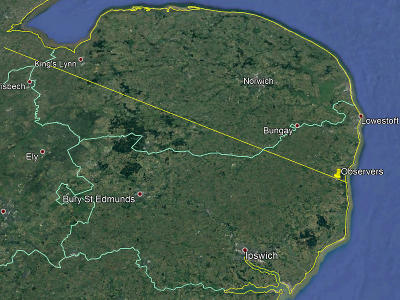 Figure 1. Graze track. Track in Google Earth.
Figure 1. Graze track. Track in Google Earth.There was no earthshine, and the unilluminated portion of the Moon was invisible. The angle of approach of the Moon to the star meant that the initial disappearance happened earlier than expected. Matthew was doing a time-check on the "Rugby" clock at the time of initial disappearance and missed the event, and was unable to recover the star until after the final reappearance event. James was adjusting the position of his telescope at the time and was slow in recognising the initial disappearance (although an allowance is made for this in his timings below).
Table 2 lists the timings recorded by the observers. Figure 4 shows the timings graphically. Agreement between observation and theory is poor.
| James | Martin | Mike | Theory |
| 23:59:10 D1 | 23:59:101 D1 | 23:59:12 D1 | 23:59:12 MD |
| 00:00:36 R1 | 00:00:35 R1 | 00:00:31 R1 | 23:59:13 D1 |
| 00:00:38 D2 | 00:00:38 D2 | 00:00:33 D2 | 00:00:29 R1 |
| 00:01:00 R2 | 00:01:01 R2 | 00:01:07 R2 | 00:00:33 MD |
| - | - | - | 00:00:41 D2 |
| - | - | - | 00:00:45 R2 |
| - | - | - | 00:00:54 MD |
Table 2. Event timings. (M=momentary, D=disappearance, R=reappearance.)
Note:
1. Suspected flicker immediately before initial disappearance.
 Figure 4. Event timings.
Figure 4. Event timings.
Star
88 Psc (ZC184, H5824, T26-1202-1)
A grazing lunar occultation of the star 88 Psc was predicted for the evening of Monday 29 December 2014. The graze track crossed Suffolk from SW to NE before heading out to sea at Aldeburgh; it passed within two km of Orwell Park Observatory. The majority of OASI observers watched the graze from the UK. Neil Morley, enjoying an extended Christmas and New Year break in Tessy-Sur-Vire, Normandy, attempted to observe from his holiday location.
Alan Smith identified potential observing sites, offset from the nominal graze line to maximise the chances of observing multiple events, using Occult and Google Earth and then, a couple of weeks prior to the event, visited the most promising. He identified the best as a large hard standing just off the A1093 mid-way between Ipswich and Felixstowe, on the drive to Walk Farm, close to a large solar array. Unfortunately, he was unable to contact the landowner to obtain permission for use of the site for astronomical purposes. Figure 1 shows the graze track. Figure 2 shows the limb profile for the event, calculated for longitude 1.25°E on the track. The blue line represents the observing location and the red line the forecast limb profile visible there.
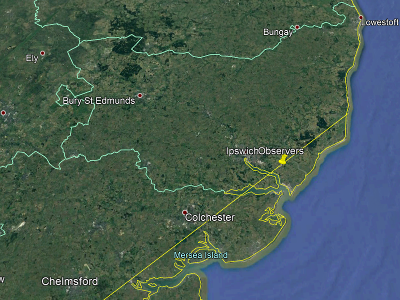 Figure 1. Graze track. Track in Google Earth.
Figure 1. Graze track. Track in Google Earth.The weather throughout the morning of 29 December was promising and the forecast for the afternoon and evening was good. At 15:00 we held the customary telephone conference to make the go/no-go decision: unsurprisingly, the prospective observers agreed unanimously to proceed.
Paul Whiting was first to arrive on site, at 16:15, pulling just off the public road, followed five minutes later by me. A prominently-displayed notice, advising that the land was private, performed its intended function and deterred us from proceeding onto the hard standing. In addition, the presence of occasional traffic along the track to Walk Farm left us in no doubt that any trespass would be quickly noticed. We therefore initially stayed put, just off the public highway. However, as more observers arrived, eventually a herd mentality set in and, emboldened by our number, we undertook a mass occupation of the hard standing at 16:45. Our presence there was not challenged.
On arrival on the hard standing, the sky was still light and only the brightest stars were visible. As the observers set up their equipment, inability to find the Pole Star hampered some in aligning their instruments. This stimulated an innovative approach by Joe Startin, who aligned his telescope with reference to the orientation of panels in the solar array. He found later, once the Pole Star became visible, that the approach was surprisingly accurate! By 17:00, most were more-or-less set up. The star was easily visible against the dark limb of the Moon. Having acquired the star, the wait began for the graze to begin.
Table 1 lists the observers, instruments and approaches to timing the event.
Observer
Equipment
Timing Method
Table 1. Observers, instruments and timing methodologies.
Table 2 lists the event timings recorded by the observers and figure 3 displays the data graphically. Most of the observers estimated timings by off-line analysis of audio recordings of their observations. The exception was Mike O’Mahony, who made a video recording. I had hoped initially that the video would enable accurate estimates to be made of event times. In practice, however, this turned out not to be possible, as many of the video frames displayed a fuzzy lunar limb or were compromised by telescope shake, atmospherics or other problems. Figure 4 shows one of the better frames of the video, at 17:37:07, prior to the first disappearance event, with the east rim of the crater Hermite approaching the star. Below, the timings taken from the video were based on a frame-by-frame analysis and represent a broad consensus between Martin Cook, Mike and me but, due to the difficulties mentioned, cannot be regarded as definitive.
| James | Martin C | Matthew | Mike (video) |
Martin RH | Alan | Joe | Jeremy | Paul | Theory |
| 37:50 D1 | 37:48 D1 | 37:35 D1 | 37:42 D1 | 37:27 D1 | 37:48 D1 | 37:36 D1 | 37:48 D1 | 37:22 D1 | 37:52 MD |
| 37:57 R1 | 38:17 R1 | 41:40 R1 | 37:50 R1 | 41:41 R1 | 38:16 R1 | 42:15 R1 | 39:48 R1 | 38:21 R1 | 38:03 D1 |
| 38:04 D2 | 38:32 D2 | - | 37:57 D2 | - | 38:27 D2 | - | 40:15 D2 | 38:33 D2 | 38:07 R1 |
| 38:18 R2 | 39:46 R2 | - | 38:10 R2 | - | 38:35 R2 | - | 41:16 R2 | 41:19 R2 | 38:24 MD |
| 38:57 D3 | 40:16 D3 | - | 38:23 D3 | - | - | - | - | - | 39:11 MD |
| 38:59 R3 | 40:40 R3 | - | 38:31 R3 | - | - | - | - | - | 39:22 MD |
| - | - | - | 38:44 D4 | - | - | - | - | - | 39:27 D2 |
| - | - | - | 39:28 R4 | - | - | - | - | - | 39:30 R2 |
| - | - | - | 39:30 D5 | - | - | - | - | - | - |
| - | - | - | 39:33 R5 | - | - | - | - | - | - |
| - | - | - | 39:40 D6 | - | - | - | - | - | - |
| - | - | - | 39:47 R6 | - | - | - | - | - | - |
| - | - | - | 40:20 D7 | - | - | - | - | - | - |
| - | - | - | 40:25 R7 | - | - | - | - | - | - |
Table 2. Event timings, mm:ss after 17:00:00. (M=momentary, D=disappearance, R=reappearance.)
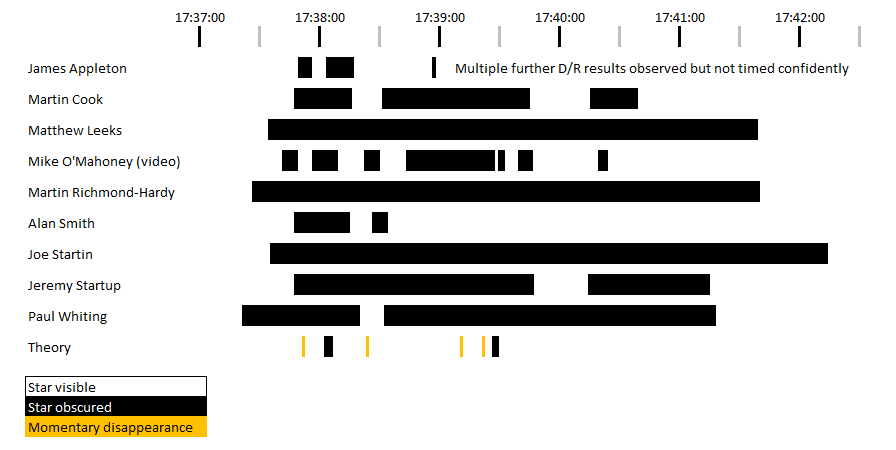 Figure 3. Event timings.
Figure 3. Event timings.
The most obvious feature of the timings is how different they all are, and how poorly the empirical results agree with theory. In broad terms, observers with larger telescopes recorded a greater number of disappearance and reappearance events than those with smaller instruments.
From knowledge of the orientation of the lunar disk, it is possible to identify approximately the lunar feature associated with each of the disappearance and reappearance events recorded on the video. Figure 5 is a map of the lunar surface around the North Pole (NP). The blue line denotes the geometric limb; also marked are the lines of 0° and 90° lunar longitude. Table 3 provides details of the major feature associated with each event.
| Event | Time | Feature |
| D1–R1 | 17:37:42-17:37:50 | E rim of Hermite |
| D2–R2 | 17:37:57-17:38:10 | W of Peary |
| D3–R3 | 17:38:23-17:38:31 | W rim of Peary |
| D4–R4 | 17:38:44-17:39:28 | N rim of Byrd |
| D5–R5 | 17:39:30-17:39:33 | E rim of Peary |
| D6–R6 | 19:39:40-17:39:47 | E rim of Peary |
| D7–R7 | 17:40:20-17:40:25 | Plain E of Peary |
Table 3. Lunar features associated with disappearance and reappearance events.
Figure 6, taken immediately after the graze, shows the observers.
From my location in Tessy-Sur-Vire, 215 km south of the graze line, the event was a total occultation, with predicted disappearance and reappearance times 17:19 and 17:47 respectively. I persuaded a friendly local to lend me an equatorially mounted Bresser Skylux 70 mm F10 refractor with two eyepieces, 20 mm and 12 mm, giving 35x and 58x magnification respectively. The instrument gave a sharp image of the Moon. However, the disappearance event at Tessy-Sur-Vire occurred some 20 minutes earlier than the graze at Ipswich, and the sky was accordingly brighter and provided a poor contrast image through the eyepiece, so poor in fact that I could not locate the star. My difficulties were compounded by rolling 70% cloud cover and, unfortunately, in the end, I did not succeed in observing the event.
Star
H109637 (T5803-0426-1)
A grazing lunar occultation of the star H109637 was predicted for the evening of Saturday 01 November 2014. Astronomical circumstances were good. The graze track passed a little south of Ipswich town centre and through a number of outlying villages (see figure 1).
James Appleton and I collaborated to identify a potential observing site. James calculated the graze track, producing it as a .kml file to be overlaid directly on Google Earth digital maps. Using Google Earth and OS maps I identified a short-list of half a dozen potential observing sites, offset from the nominal graze line to maximise the chances of observing multiple events, choosing them to be off-road, away from sources of light pollution and with an unobstructed southern aspect. The sites chosen were just to the north of Ipswich, between Tunstall and Snape. I surveyed the locations a couple of weeks prior to the event, and selected the most promising - the Sand Gall Forestry Commission picnic site. The site benefited from a large car park, was secluded by trees and was far from sources of light pollution. A second, backup site was an access track to a nearby field.
With a day to go to the graze, cloudy weather was forecast for the event, but with clear skies approaching from the west. At 18:00 on the day of the graze, we held a go/no-go telephone conference and the decision to proceed with observations was an easy one, as the clear-weather window was predicted to arrive in time. We agreed to rendezvous on a side road off the B1069 and proceed to the observing site in a convoy.
All but one of the observers met at the agreed rendezvous point at 20:30 and continued to Sand Gall, arriving at 21:00. The exception was James who, running behind schedule, in haste overshot the exit from the B1069 and had to retrace his steps, eventually arriving 10 minutes late. On arrival at the observing site, the skies were clear: there was no cloud, not even the usually ubiquitous aircraft vapour trails, the atmosphere was transparent and seeing was good! Visibility remained excellent throughout the observation. The only slight weather-related difficulty was gusts of wind, some of which were strong enough to cause telescope shake. The observers quickly located the star which, although of magnitude 7.1 and at an altitude of only 23°, was easily visible against the glare of the 70% sunlit moon. However, none of the observers could see the secondary component. Initially all observers thought that the trajectory of the Moon relative to the star indicated a full occultation but, fortunately, the calculations proved correct and the event turned out to be, as forecast, a graze.
Figure 2 shows the limb profile for the event, calculated for longitude 1.5°E on the track. The blue line represents the observing location, and the red line the forecast limb profile visible there.
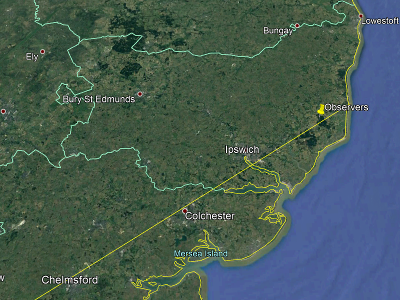 Figure 1. Graze track. Track in Google Earth.
Figure 1. Graze track. Track in Google Earth.
Observers and their equipment were as follows:
Figure 3, taken immediately after the event, shows the observers.
At around 21:39:16, the dark limb of the Moon obscured the star, beginning a sequence of disappearances and reappearances. Observers reported slightly different event times, summarised in table 1 and figure 4, where they are compared with theoretical predictions based on the limb plot.
| James | Martin | Mike | Alan | Joe | Theory |
| 21:39:17 D1 | 21:39:17 D1 | 21:39:16 D1 | 21:39:17 D1 | 21:39:16 D1 | 21:39:17 D1 |
| 21:39:46 R1 | 21:39:45 R1 | 21:39:45 R1 | 21:39:46 R1 | 21:39:49 R1 | 21:39:46 R1 |
| 21:41:05 D2 | 21:41:02 D2 | 21:41:00 D2 | 21:41:16 D2 | 21:40:50 D2 | 21:41:03 D2 |
| 21:41:45 R2 | - | - | 21:41:44 R2 | - | 21:41:15 R2 |
| 21:41:53 D3 | - | - | 21:41:52 D3 | - | 21:41:27 D3 |
| 21:43:44 R3 | 21:43:43 R3 | - | 21:43:42 R3 | - | 21:41:43 R3 |
Table 1. Event timings. (D=disappearance, R=reappearance.)
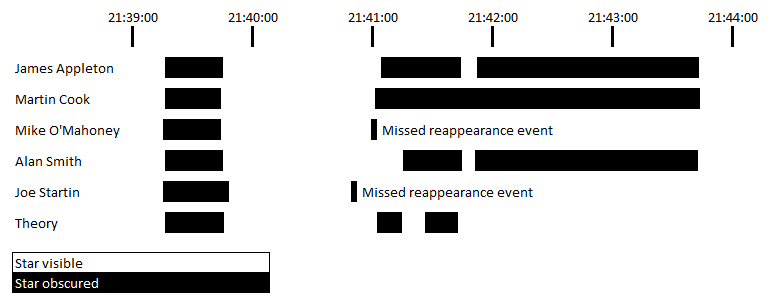 Figure 3. Event timings.
Figure 3. Event timings.
Not shown above, Kevin observed a disappearance lasting for slightly over 27 seconds with a reappearance just south of a large mountain range, and a similar event shortly after, but unfortunately did not record event times.
The initial disappearance and reappearance took place against the dark limb of the Moon and thus presented good contrast, resulting in confident timings which were accordant between observers and agreed well with theory. At around 21:40:30, the star approached the sunlit cusp and bright limb, the contrast between the star and lunar limb was much reduced, and it became difficult to make accurate timings. As the star moved further into the sunlit portion of the Moon, difficulties increased and, indeed, both Mike and Joe were unable to time the final reappearance. The star after final reappearance on the bright limb appeared very much fainter than it did on initial disappearance on the dark limb, an effect of contrast against the nearby bright lunar surface.
Star
104 Tau (ZC764, H23835, T1286-0403-1)
A grazing lunar occultation of the star 104 Tauri was predicted for 00:45 on the morning of Monday 13 January 2014. The astronomical circumstances were good. The graze track passed a little south of Colchester (see figure 1) and several members of OASI decided to attempt to observe the phenomenon.
James Appleton and I performed our usual double act to select an observing site. James calculated the graze track, producing it as a .kml file to be overlaid directly on Google Earth digital maps. Using Google Earth and OS maps I examined the track and identified a short-list of half a dozen candidate observing sites, offset from the nominal graze line to maximise the chances of observing multiple events, choosing them to be off-road, away from sources of light pollution and with an unobstructed southern aspect. The sites were close to the Abberton reservoir, between Abberton and Kelvedon. I surveyed the sites a couple of weeks prior to the event, and quickly selected the most promising: a disused airfield on which one of the runways was accessible as a minor road. (In fact, the runway would be able to accommodate several teams of observers straddling the graze track, at right angles to it.) A second, backup site was on a farm access track. I approached the owner of the farm to inform him of our intentions.
With a day to go to the graze, cloudy weather was forecast for the event, but with clear skies approaching from the west. Our standard practice is to hold a telephone conference during the day prior to the event to make a go/no-go decision. At 10.00pm on 12 January we held the conference, and the decision to cancel the observations was an easy one, as there was only an outside chance that clear weather would arrive in time. Our decision was correct: at the time of the graze, there was complete cloud cover. And less than one hour later, skies were completely clear!
Figure 2 shows the limb profile for the event, calculated for longitude 0.75°E on the track. The blue line represents the observing location, and the red line the forecast limb profile visible there.
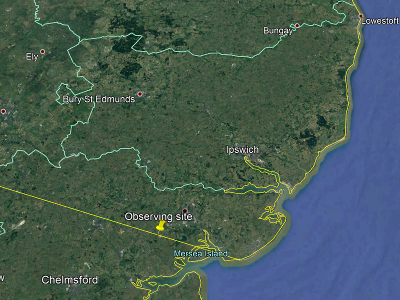 Figure 1. Graze track. Track in Google Earth.
Figure 1. Graze track. Track in Google Earth.Star
13 Sgr (μ Sgr, ZC2633, H89341, T6276-3093-1)
A grazing occultation of the star 13 Sagittarii was predicted for the morning of Wednesday 06 March 2013. Circumstances were not ideal: although the star is relatively bright and the occultation a south limb event, the track came no closer than 50 km to Orwell park Observatory and, at the time of the graze, the altitude of the star was only 14° and of the Sun ‑9°. However, several members of OASI expressed a desire to observe the phenomenon.
James Appleton and I performed our usual double act to identify a potential observing site. James calculated the graze track, producing it as a .kml file to be overlaid directly on Google Earth digital maps. Using Google Earth and OS maps I examined the track and identified two potential observing sites, choosing them to be off-road, away from sources of light pollution and with an unobstructed eastern/southern aspect. Both were close to the Tacolneston TV transmitter mast just to the west of Long Stratton. I surveyed the sites a couple of weeks prior to the event, and quickly selected the most promising: a sugar beet "clamp" adjacent to a minor road passing just to the south of the TV mast. It had a clean, dry concrete surface, with room to park several vehicles, and was surrounded by large straw bales (providing useful shelter from potential winds). I rejected the other site as being too far along a very muddy track (years of experience have shown that attempting to negotiate such tracks in the dark can have unfortunate consequences!) I approached the owner of a house adjacent to the clamp, and the manager of the farm which owned the clamp, to obtain permission to use it as an observing site. Both individuals were very interested in the somewhat unusual activity!
With some days to go to the graze, the usual cloudy weather was forecast for the event, but clear skies for the evening before. So, we should be able to observe the eclipse disappearance and reappearance of Io in the hours before the graze (18:49 and 22:19 respectively) providing data for an attempt to employ Rømer's method of estimating the speed of light; but it did not look promising for the graze itself!
At 9.00pm on the day before the graze, we held a go/no-go telephone conference, at which most potential observers decided to abandon the observation, leaving only the most dedicated to wait until 3.00am to make a "final" decision.
In clear skies I observed the eclipse re-appearance of Io, timing it at about 22:15, then loaded my telescope into the car, set the alarm for 3.00am and went to bed. At 3.00am, the sky was completely clouded over so I sent a text message to the few other remaining potential observers informing them that the observations were off. I waited until 4.00am (the latest that I could leave and still hope to arrive on site with time to set up my kit and observe the graze) but alas, there was still complete cloud cover! I checked the Met Office infra-red satellite images, which confirmed that there was no chance of a break in the cloud. Yet again, bad weather had intervened to prevent observation of the year's only graze.
Figure 1 shows the graze track. Figure 2 shows the limb profile for the event.
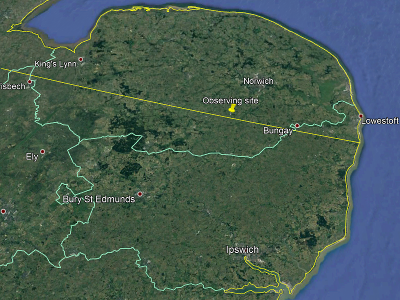 Figure 1. Graze track. Track in Google Earth.
Figure 1. Graze track. Track in Google Earth.Object
Jupiter and the Galileans
On Sunday 15 July 2012, the planet Jupiter and all four Galilean moons were occulted by the Moon. For an observer in a favourable position this would present a very rare opportunity to witness a grazing occultation of the bodies. Although the event was timed for around 3.00am (BST), and observation would require travel to North Norfolk, several members of OASI expressed an interest in the event.
Using predictions by James Appleton, I plotted the graze tracks (see figure 1) of all five objects on Google Earth and identified candidate observing sites. The track of Io being closest to Orwell Park, I decided to position the observers for grazes of Io and Jupiter; this would also enable observation of full occultations of the other Galileans. The event would occur at an altitude of only 8.5° in the dawn sky, so a clear view east-north-east was essential. After inspecting candidate sites, I selected the best one, a large concrete hard off a rural road just north of Beetley. It offered clear views over corn fields, with lots of space for cars and telescopes.
Saturday 14 July dawned wet, totally overcast and miserable, with the forecast for the next 24 hours being more of the same. However, the infra-red weather satellite sequences showed a narrow band of possibly clear skies moving in from the west, which just might be over the site at the right time. We held the customary go/no-go telephone conference call at 10.00pm; during the call, most potential observers decided that conditions were too unfavourable to warrant travelling. However, Joe Startin and I thought that the opportunity was too good to ignore. Travelling in separate vehicles, we left our homes at 0.15am in heavy rain, on very wet roads, and travelled along the A140 to the Norfolk border. Once into Norfolk, the roads were bone dry! I arrived on site at 1.45am and Joe a few minutes later. We were met by a totally overcast sky. By 2.30am, with 35 minutes until the graze, a few stars were visible with some clear patches in various positions around the horizon, but not where we needed them to be! And so it remained: yet another observation of a graze foiled by the British weather. To add insult to injury, only some 24 hours later, skies were clear and an aurora was visible!
Figure 2 shows the limb profile. Figure 3 is a selfie of the would-be observers.
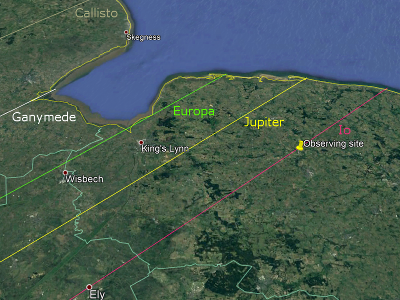 Figure 1. Graze tracks. Tracks in Google Earth.
Figure 1. Graze tracks. Tracks in Google Earth.Star
29 Cnc (ZC1271, H41578, T808-1546-1)
A grazing occultation of 29 Cancri was predicted for 19:30 on the evening of Sunday 01 April 2012. The star is not particularly bright and the occultation was a north limb event, so astronomical circumstances were not exceptionally good. However, the graze track passed only 7.9 km from Orwell Park Observatory and the time of the event was very convenient, so there was considerable interest among members of OASI in observing the event.
Alan Smith and I collaborated to identify potential observing sites. I calculated the graze track, producing it as a .kml file to be overlaid directly on Google Earth digital maps. Examination of the limb profile suggested that an observing site approximately 2.0 km south of the track would give the best prospect of observing multiple events. Alan then identified a shortlist of six potential observing sites, choosing them to be off-road, away from sources of light pollution and with an unobstructed southern aspect. Three of the sites were west of the River Deben and three east. Alan reconnoitred the sites and eventually selected two near Newbourne: a primary site at Walk Barn, off Newbourne Road and a secondary site off Mill Road. Alan requested permission from the landowner and obtained a key for the Walk Barn site. OASI member Gerry Pilling was fortunate in that the graze track passed only 670 m due south of his home at Martlesham Heath; he decided to observe the event from his back garden.
With some days to go to the graze, cloudy weather was forecast. However, as the event approached, the forecast steadily improved. The day itself dawned bright and sunny, and remained largely cloud-free. There was haze, but not enough to cause difficulties. At 6.00pm on Sunday, prospective observers attended the customary go/no-go telephone conference, and the decision to proceed with observations was unanimous!
Alan arrived at the Walk Barn site at 7.15pm and unlocked the gate. By about 7.30pm, five additional observers had joined him and were busy setting up their instruments: James Appleton, Martin Cook, Jerry Reynolds, Joe Startin and Paul Whiting. The site was most satisfactory and there was no need to consider the secondary site off Mill Road. By about 7.40pm, the observers had largely completed setting up and were following the Moon approaching the star. But where were Neil Morley and Roy Gooding, who were also expected? The question was answered at about 7.50pm: the observers heard a car approach and moments later witnessed it, with occupants Neil and Roy, shoot along Newbourne Road straight past Walk Barn! A quick call by mobile phone from Martin to Neil eventually guided them to the site and, by 8.00pm, they had arrived, just in time for a rapid setting up before beginning observation.
Martin, Alan, Paul and Neil used digital voice recorders (DVRs) to record spoken commentaries of their observations together with reference time from Rugby clocks (synchronised to the time service broadcast by the National Physical Laboratory.) Roy used a tape recorder (TR) and the speaking clock. Later analysis of the recordings enabled estimation of event times, summarised below. (Paul's estimates are based on an analysis of Alan's commentary.) The observers noted that there was a discrepancy of a few seconds between some of the Rugby clocks: this was most unexpected, but in the rush to set up equipment and begin observing, further investigation was not possible before the event.
Paul observed with binoculars and, unfortunately, glare from the Moon in the large field of view meant that he lost sight of the star before it was occulted. However, the remaining seven observers at Walk Barn used telescopes (details of the instruments are below) and all were able to track the star as the Moon closed. There was just enough earthshine to make the unlit portion of the Moon visible telescopically and the observers could therefore estimate the apparent distance between the limb and the star. By 8.15pm, the objects were very close and a hush of concentration and anticipation descended on the group.
Figure 1 shows the graze track. Figure 2 shows the limb profile for the event, calculated for the location on the track closest to Orwell Park Observatory.
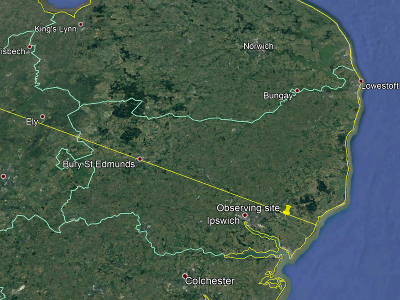 Figure 1. Graze track. Track in Google Earth.
Figure 1. Graze track. Track in Google Earth.Although the observers hoped to observe a grazing occultation, in fact 29 Cancri disappeared and then reappeared just once, both events on the dark limb, with no trace of the multiple events characteristic of a graze. The observers continued observing for approximately five minutes after reappearance, hoping for another disappearance, but in vain.
Meanwhile, at Martlesham Heath, Gerry, using a 200 mm Dobsonian, was surprised to find the star invisible with 30x magnification. However, 100x magnification revealed it. Unfortunately, due to problems with his watch, his estimated timing is a guesstimate. He recorded a qualitatively different observation from that of the Walk Barn observers, witnessing the star disappear behind the dark limb and reappear from behind the sunlit limb, and to display a possible graze effect. An extract from his observing report makes this clear: Was a full occultation with the dark limb, but possible graze effect as it emerged from the illuminated limb… I thought it possibly reappeared and disappeared maybe once or twice.
Table 1 summarises the estimated event times. So, how to explain the disparity between the observations and the limb profile of figure 2, which indicated that at least two disappearances should have been visible? Well, predicting the circumstances of a lunar occultation is not an exact science! Although in the calculations for 29 Cnc, I used the Hipparcos star catalogue and lunar ephemeris DE-405, providing highly accurate positional information on the location of the Moon and star, there remains a question over the accuracy of the lunar limb data. The available data is based on the work of C B Watts in 1963. Unfortunately, the quality of the data is variable and, at the present time, represents the biggest obstacle to accurate occultation predictions.
| Observer | Equipment | Timing | Method |
| James Appleton | 250 mm f10 Meade SCT, 12 mm e/p | - | - |
| Martin Cook | 250 mm f5.4 Dobsonian, 18 mm e/p | D: 19:29:18 R: 19:31:01 |
DVR & Rugby clock |
| Roy Gooding | 120 mm f5 refractor, 12.5 mm e/p | D: 19:29:20 R: 19:31:03 |
TR & speaking clock |
| Neil Morley | Celestron C102-HD, 25 mm e/p with 2x Barlow | D: 19:29:19 R: 19:31:01 |
DVR & Rugby clock |
| Jerry Reynolds | 200 mm f10 Meade ACF Lightswitch, 26 mm e/p | - | - |
| Alan Smith | 250 mm f6 Dobsonian, 12 mm e/p | D: 19:29:14 R: 19:30:57 |
DVR & Rugby clock |
| Joe Startin | 125 mm f15.2 Meade ETX, 26 mm e/p | - | - |
| Paul Whiting | 18 x 50 binoculars | D: 19:29:14 R: 19:30:56 |
DVR & Rugby clock |
| Gerry Pilling | 200 mm f6 Dobsonian, 12.4 mm e/p | Star occulted for ~1 minute. | Guesstimate |
Table 1. Event timings. (D=disappearance, R=reappearance.)
The spread of disappearance and reappearance timings among the Walk Barn observers is accounted for in part by the different times presented by the Rugby clocks. Eventually, following some research, Neil found an explanation for this: the NPL time service was suspended 26 March - 05 April to enable repairs to the transmitter and, during this period, some of the clocks began to drift.
Gerry's observing site was some 670 m due south of the predicted graze track. He saw the star reappear from behind the sunlit limb, indicating that the local selenography allowed sunlight to penetrate further along the northern limb than the geometric cusp. This is not incompatible with the Watts data. It appears also that Gerry may have witnessed a momentary blinking of the star on reappearance associated with the minor limb peak at 110s after the central event.
Although the observations were difficult to interpret, all other aspects were most satisfactory. Best of all, there were nine observers, more than for any OASI grazing occultation observation during the last 25 years! Photos below are by James.
Star
40 Ari (ZC415, H13108, T1226-2016-1)
A grazing lunar occultation of the star 40 Arietis was predicted for the early hours of the morning of Saturday 17 September 2011. Although the star is not exceptionally bright, the configuration of the graze was generally good so there was considerable enthusiasm to observe the event and the prospective observing team amounted to seven members of OASI: James Appleton, Martin Cook, Roy Gooding, Matthew Leeks, Neil Morley, Alan Smith and Joe Startin. Seven graze observers is approximately double the number that has been active in OASI during the last couple of decades!
In recent years, Google Earth has revolutionised the process of selecting the observing site for a graze. The track of the event can be produced as a .kml file to be overlaid directly on digital maps, enabling rapid examination of potential observing sites. Using Google Earth, we plotted the track (figure 1) and identified six potential observing sites and, after a reconnoitre by Alan, settled on an observing site just off Brand Road, SE of Great Livermere.
Clouds filled the sky on the morning of Friday 16 September. Weather forecasts showed the sky remaining cloudy until 22:00, becoming clear at 01:00, then clouding over again by 04:00 with rain setting in by 07:00. At 22:00 on Friday night, prospective observers held a go/no-go telephone conference. The latest weather forecasts and infra-red weather satellite images were not encouraging, so most potential observers stood down. However, Martin and Alan, showing more determination than most, agreed to review the weather at 02:00 and then decide whether or not to attempt to observe.
And so it was. At 02:00, Martin and Alan spoke by telephone and, although the sky was then clear, weather satellites showed a dense bank of cloud approaching, so they cancelled the observation. Alan rose again at 03:50 to check the sky, and found that it was completely overcast. So they’d made the correct decision!
Figure 2 shows the limb profile.
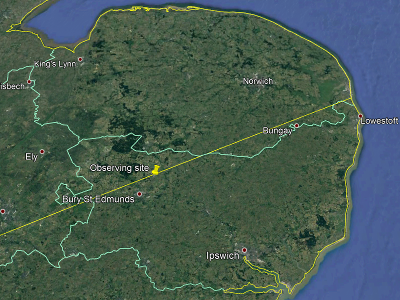 Figure 1. Graze track. Track in Google Earth.
Figure 1. Graze track. Track in Google Earth.Star
5 Leo (ξ Leo, ZC1409, H46771, T824-1978-1)
Calculations indicated only one good grazing occultation visible from East Anglia in 2010, namely the northern limb graze of the star 5 Leonis on the evening of Friday 26 March. Several recent grazes have occurred in the small hours of the morning, so an event at a more sociable time was overdue and most welcome! Martin Cook, Roy Gooding, Alan Smith and I made preparations to observe. I calculated details of the graze track (figure 1) and the lunar limb profile (figure 2) and identified potential observing locations near Pond Hall, Bentley, just off the A137, seven km from the centre of Ipswich. Alan then reconnoitred the potential locations and compiled a short-list of five.
As the day of the graze drew near, Alan encouraging members of OASI to volunteer to observe. His efforts paid off, and Joe Startin joined us, bringing the observing party to five.
The weather on 26 March during the daytime was variable. Brief periods of clear skies alternated with overcast cloud and the threat of rain. It was impossible to know what the weather would do during the evening. At 6.30pm, Alan, Martin and I held a teleconference to ponder the usual go/no-go decision. At the time of the teleconference, skies were clear and the decision was easy: we should attempt an observation!
The observers assembled off the A137 at a pre-arranged rendezvous point, at the start of the track to Cragpit Farm. All had gathered by 19:45, bringing the following equipment:
After the obligatory photos (for once taken before observing, rather than after) we agreed to divide into two teams observing from different locations: Martin and Alan on the track to Cragpit Farm and Roy, Joe and me off Bentley Hall Road. Figure 3 shows all the observers.
The two teams arrived at their appointed sites at about 20:00. By 20:20, Martin, Alan and I had found the star, in apparent close proximity to the Moon. There then followed a quick panic! Did the star appear too bright? Were we mistakenly looking at the wrong star? Had something gone horribly wrong? After 15 minutes of frantic mobile phone calls between the two teams of observers and consultation of Norton's Star Atlas, all agreed that we had been correct the first time and we really were sighted on 5 Leonis!
As time drew on, the sky gradually became more and more hazy. There were numerous vapour trails from aeroplanes coming into/leaving Stansted Airport. When the haze was particularly thick, the vapour trials cast very prominent shadows on it in the moonlight - none of us had witnessed this phenomenon before! The haze made for a very low contrast view in the eyepiece, as a result of which Roy was unable to find the star and was on the verge of giving up in despondency. However, for once the weather was on our side and, with approximately five minutes to go to the predicted event time, the haze cleared, and the view in the eyepiece became breathtakingly clear. Roy found the star.
We all concentrated at our eyepieces in the final five minutes, watching the north limb of the Moon draw ever closer to the star, and then glide silently past. The star was not occulted. However, the sight of the spectacular lunar topography, shining in stark relief on the illuminated cusp, gracefully gliding past the star, was magnificent. An unilluminated portion of the limb made the closest approach to the star; unfortunately, the absence of any visible Earthshine meant that it was not possible to estimate how close the objects appeared to come.
After the graze, we re-convened at our initial assembly point to compare notes then headed for home.
The fact that the star was not occulted indicates that we were too far north. A detailed examination of the Watts data for the event shows that it would have been better to locate 250 m or more to the south of the track.
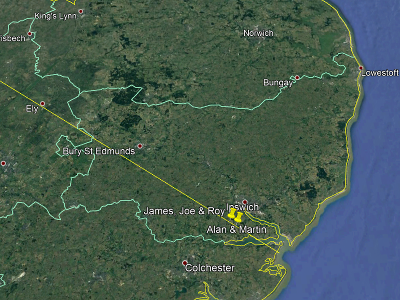 Figure 1. Graze track. Track in Google Earth.
Figure 1. Graze track. Track in Google Earth.Star
Alcyone (25 Tau, η Tau, ZC552, H17702, T1800-2202-1)
A grazing lunar occultation of the star Alcyone was predicted to occur during the early evening of Wednesday 07 January 2009. The star is a member of the naked-eye grouping The Pleiades, and accordingly the graze would be accompanied by several total occultations and "near misses". For a change, the graze would occur at a sociable time!
The usual OASI graze observers (James Appleton, Martin Cook, Roy Gooding and Alan Smith) began making plans. All except Roy decided to attempt an observation (work commitments unfortunately prevented Roy) and David Payne also indicated that he would join the party. The observers made the usual preparations: James generated detailed predictions of the graze track (see figure 1) and Alan reconnoitred potential observing locations. By a stroke of good luck, he had a friend who lived only some 200 m N of the graze line, close to Shrubland Hall, in NW Ipswich. Alan's friend was happy for his back garden to be occupied by observers!
On 07 January, dense cloud blanketed the whole of East Anglia from early morning onwards. A brief thinning over Ipswich around midday raised hopes, but these were short-lived as the cloud cover rapidly re-established itself. At approximately 1.00pm, the prospective observers called off their intended observations.
Figure 2 shows the limb profile for the point on the graze track closest to Orwell Park Observatory.
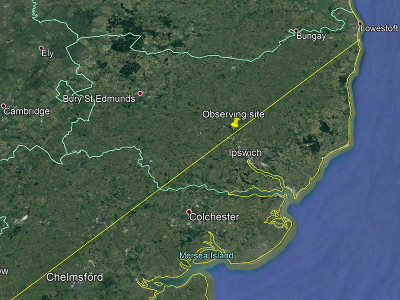 Figure 1. Graze track. Track in Google Earth.
Figure 1. Graze track. Track in Google Earth.Star
Asterope (22 Tau, ZC543, H17588, T1804-2521-1)
In the early evening of Wednesday 12 March 2008, there occurred a grazing lunar occultation of the star 22 Tau, the fainter component of the double star Asterope, the most northerly member of the Pleiades visible to the naked eye. The graze line crossed East Anglia from west to east in the region of the Norfolk-Suffolk border. Alan Smith, Roy Gooding, Martin Cook and I, encouraged by our success in observing the graze of 91 Leonis two and a half months earlier, attempted to observe the event.
I generated detailed predictions of the event and produced a plot of the graze line (figure 1). Alan identified potential observing locations using Ordnance Survey maps and Google Earth and then spent a day performing a reconnaissance and negotiating with a landowner for permission to observe from his land. His finally recommendation was that we observe from one of the hard standings and verges in the vicinity of Steppings Lane, some two and a half kilometres south of the village of Hempnall in Norfolk.
The weather was very stormy on 10-11 March with gale-force winds and heavy rain. On 12 March, there was no rain but the wind remained strong, gusting to gale force. More in hope than expectation, we made pre-arranged phone calls at 3.00pm to confirm that the observing trip was "on". I collected Roy from his home and we rendezvoused with Alan and Martin at the latter's place of work in Needham Market at 4.00pm. We then travelled to Hempnall in convoy: Alan led the way, guided by his satnav, Martin followed, and Roy and I brought up the rear. Martin, Roy and I were all amazed at how speedy the journey was - we wondered whether Alan’s satnav was programmed for acceleration to maximum velocity at every opportunity! At 5.00pm we arrived at Hempnall via the B1527. We turned off onto Field Lane and then Steppings Lane, looking for potential observing sites. We soon found the first hard standing just off the road but, after a little debate, decided to move on and see if there was anywhere better, finally parking at another hard standing at 5:15pm. At this time the wind was still very gusty, and the hard standing was exposed, with the result that we all experienced serious wind-chill! Thick cloud was blowing in from the west, and it was difficult to believe that we would be able to make any observations. However, by 5:50pm the cloud was visibly clearing, so we began setting up our telescopes:
Although the wind caused significant telescope shake, we all rapidly found what we thought was 22 Tau: this was a welcome surprise, as we had anticipated difficulty finding such a faint star against a sky which was still relatively bright. Eventually, once the graze was imminent, we realised that we were not focussed on 22 Tau, but in fact were following a nearby, much brighter star (this explained how easily we had found it!) Just before the time of the graze, Martin did manage to locate 22 Tau, very close to the lunar cusp. I glimpsed it briefly but Roy and Alan did not. Martin observed the Moon obscure the star. Once the star reappeared from behind the Moon and was clear of the lunar limb, we were all easily able to see it, as the sky had darkened somewhat. Nobody observed intervening reappearance/disappearance events.
We packed up our equipment and left site at 6:45pm, just as a thick bank of cloud rolled in from the west. All in all, we had travelled a long way for a very unsatisfactory observation. However, we were able to salvage some benefit from our labours in terms of defining a datum point of sky brightness and star magnitude which was just on the limit of visibility.
Figure 2 shows the limb profile.
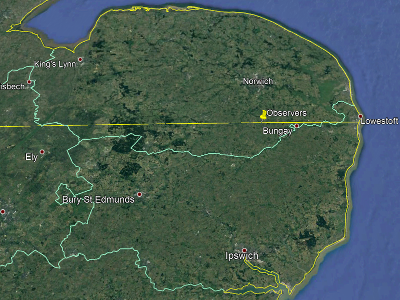 Figure 1. Graze track. Track in Google Earth.
Figure 1. Graze track. Track in Google Earth.Below are James' photos of the observers setting up:
Star
91 Leo (υ Leo, ZC1685, H56647, T4930-1093-1)
Alan Smith’s successful observation of the graze of 9 Cnc on 01 November 2007 encouraged potential observers as the third graze of 2007 approached. Alan, Roy Gooding and Martin Cook joined me in planning our observations. I calculated the graze track (figure 1) and Alan initially selected three potential observing locations. Following a reconnaissance, he finally recommended a site at Lattinford Hill (west of Ipswich), approximately 1.4 km south of the graze line, as suggested by the Watts profile for the event.
The day of 29 December was initially overcast but the clouds thinned as time wore on and, by midnight, we were reasonably confident of a clear sky. I collected Roy from his home at 1.45am on 30 December in my wife’s car, which had been recently washed (the significance of which will be revealed below!), and we drove to the observing location, arriving at 2.00am. We were first to arrive and, on surveying our surroundings, it was immediately apparent that Alan had chosen an excellent site, off a very quiet minor road and with unobstructed views. Alan arrived 10 minutes later. We decided to move the cars a few metres off the road up a track by the side of a ploughed field which was very muddy after considerable rain in previous days. The manoeuvre should have been a simple operation ‑ but it wasn’t. Alan directed as I endeavoured to reverse the car along the track, but there ensued a minor crisis as I slipped off the track and became stuck in the mud. After much pushing from Alan and spinning of the wheels, the car finally lurched back onto the track, but only after it had been thoroughly spattered with mud. Mrs A was not best pleased on seeing the vehicle the following day!
At 2.20am Martin arrived, having missed the excitement. By now, the sky was more cloudy than we had hoped for, so we delayed setting up our telescopes for a few minutes to see what the weather was going to do. As we waited, the clouds began to clear. We took this as encouragement to set up our equipment, which we completed by 2.40am. Observers and telescopes were:
The sky was very clear and transparent; there was a little gusty wind, but not enough to cause any serious problems. We easily found the star. Initially, as we followed the Moon drawing nearer to the star, it appeared as if the lunar limb might miss the star altogether, but our worries proved unfounded and we all observed the graze, witnessing the star disappear and reappear several times behind the lunar limb. Alan and Martin successfully recorded event times. Alan used his trusty MP3 recorder as at the previous graze. Martin adopted a more sophisticated approach: he had constructed a hand-held push-button unit wired to a battery and LED positioned beside a Rugby radio clock. He used the push-button to make the state of illumination of the LED match the visibility of the star (i.e. star visible – LED on; star obscured – LED off) and video recorded the Rugby clock and LED for later analysis. The audio track captured verbal comments on his observations. I attempted to record event times using a stopwatch with push-button lap timer, but unfortunately when I later went to analyse the results, found that I had been pressing the wrong button and had not recorded any times at all!
By 03:21, the lunar limb was visibly well clear of the star. We performed final time checks and satnav location checks before taking the obligatory group photo, packing up and returning home. As we packed up the equipment, we noted that our observations marked a fitting conclusion to OASI’s 40th anniversary year.
Figure 2 shows the limb profile for the event. Figure 3 shows the mud-spattered car and figure 4, taken immediately after the graze, the observers.
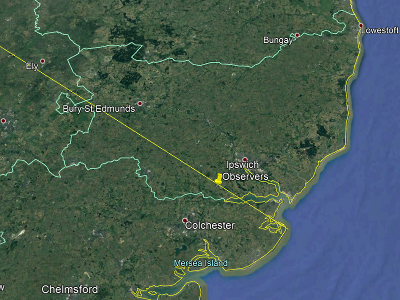 Figure 1. Graze track. Track in Google Earth.
Figure 1. Graze track. Track in Google Earth.
In the days following the graze, Martin and Alan analysed their event timings. The value of recording two independent sets of times became apparent as cross checking revealed an error in the initial analysis. Table 1 and figure 3 show the final estimates of event times, rounded to the nearest second, together with theoretical timings based on analysis of the limb profile. Clearly, agreement between theory and observation is not particularly good.
| Observation | Theory |
| 03:16:12 D1 | 03:16:20 D1 |
| 03:16:58 R1 | 03:16:55 R1 |
| 03:17:15 D2 | 03:17:30 D2 |
| 03:18:16 R2 | 03:17:55 R2 |
| 03:18:17 D3 | - |
| 03:18:18 R3 | - |
Table 1. Event timings. (D=disappearance, R=reappearance.)
 Figure 3. Event timings.
Figure 3. Event timings.
Both Alan and Martin noted that when the star reappeared at 03:16:58 it initially appeared fainter than previously. This is uncommon as most stars appear essentially as point sources of light and so during a grazing occultation are either completely obscured or not obscured at all. However, υ Leo is a giant star of spectral type G9III, with a diameter some 11 times that of the Sun. It remains a subject for future research to determine whether it could have been partially obscured by a limb feature, explaining the apparent initial dimming.
Star
9 Cnc (μ1 Cnc, ZC1221, H39659, T1927-1970-1)
Arrangements to observe the second graze of 2007 initially ran far more smoothly than those for the first! Again I predicted the graze track (figure 1) and, together with Alan Smith, used OS maps and Google Earth to identify possible observing locations. By this time, we were able to convert deftly between WGS84 and OS coordinate systems. However, a brief panic nevertheless occurred when, somewhat belatedly, it transpired that the occultation graze tracks were based on yet another coordinate system, IAU 1976 (defined by the International Astronomical Union in 1976), which differed from both WGS84 and OS systems! After a little research it soon proved possible to write more software to convert coordinates between any of the three systems. Once the problems with coordinate systems were resolved, Alan undertook a detailed reconnaissance of potential observing sites, this time selecting a track at Dews Farm, near Halesworth, as preferred location, and obtained permission from the farmer to use the site.
Unfortunately, various commitments and crises befell potential observers meaning that they were unable to accompany Alan, and he therefore observed alone. The sky was cloudless, the site good and the seeing also good. He observed using a 75 mm equatorially mounted refractor.
Figure 2 shows the limb profile.
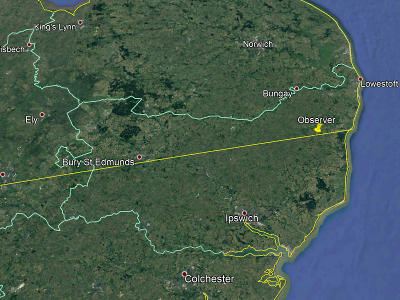 Figure 1. Graze track. Track in Google Earth.
Figure 1. Graze track. Track in Google Earth.
Alan was hampered by glare from the illuminated portion of the Moon and by very considerable dewing of his object glass. The former prevented observation of the initial disappearance of the star, while the latter obscured the final stages of the graze. Despite the difficulties, he did see the star successively hidden and revealed behind features on the lunar limb, and recorded the following event times on an MP3 recorder (using a Rugby radio clock and satnav to provide reference time.)
| Time | Observation |
| 02:04:49 | star disappears (into the glare?) |
| 02:09:13 | star winks in/out. |
| 02:09:18 | visible. |
| 02:09:24 | disappears. |
| 02:09:25 | visible. |
| 02:09:43 | winks out/in. |
| 02:09:48 | disappears. |
| 02:09:50 | visible. |
| 02:09:53 | disappears. |
| 02:12:13 | winks in/out (this might be wishful thinking!) |
| 02:12:50 | visible. |
| 02:13:03 | disappears. |
| 02:15:42 | visible. |
| 02:15:50 | disappears. Did not see the star again, thanks to dew on the OG. |
The lunar limb profile for the graze indicates a single event, with disappearance at 02:06:26 and reappearance at 02:06:54: there is no agreement between theory and observation!
Star
ZC797 (H24984, T1855-0230-1)
The first graze in East Anglia during 2007 was of the star ZC797 in the early hours of the morning of Tuesday 02 October 1007. I calculated the graze track (figure 1) and limb profile (figure 2); the latter offered the prospect of multiple disappearance events. Together with Alan Smith, I used 1:25 000 scale OS maps and Google Earth to select potential observing locations, settling eventually on several in the vicinity of Otley. Unfortunately, from this point onwards, preparations did not proceed smoothly!
Alan undertook a detailed reconnaissance of the potential locations and obtained permission from a farmer to observe from a concrete hard standing in a field off the B1078 SE of Ashbocking. In plotting the position on a map, we realised that Alan’s satnav and Google Earth were providing positional coordinates in very good agreement with one another, but that the OS maps were providing very different positional coordinates. The discrepancy amounted to over 100 m! As we aimed to establish our position to within a few metres to enable accurate reduction of results, this discrepancy caused much consternation. Further investigation via the OS website revealed that the fundamental construction of the coordinate system used by satnav devices and Google Earth (WGS84, World Geodetic System 1984) is different to that used by the OS (based originally on a spheroid of rotation defined by Airy in 1830), and that this results in positional discrepancies which can be as great as 200 m in East Anglia. Fortunately, the differences are predictable and can be calculated.
After further investigations, we were able to code a spreadsheet to convert between the two coordinate systems. But our efforts were (for this graze) in vain, due to the weather. The sky had been completely overcast throughout the day of 01 October 2007 and, by early evening, there was clearly no prospect of any observations during the night, so we called off the attempt.
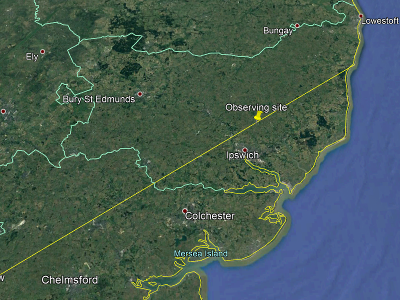 Figure 1. Graze track. Track in Google Earth.
Figure 1. Graze track. Track in Google Earth.Star
ZC1031 (SAO78691, PPM96469)
I used software created by the Belgian astronomer, Jean Meeus, to predict the graze track of ZC1031 on 17 October 1992. The best observing location was near Cockley Cley. Although the event was a bright side approach, overall it appeared to be worth observing.
By 21:00 on the day of the graze, Mike Harlow had received a weather satellite image which showed a large band of cloud moving slowly south towards East Anglia. Although it was not possible to estimate whether the cloud would arrive before the graze occurred, four observers (Alan Smith, Martin Cook, Roy Gooding and I) decided to take a chance on the weather and drive to the chosen observing site. Our journey to Cockley Cley began with a transparent sky but, as we approached the observing site, cloud cover increased until at times the Moon was completely obscured. At 22:30, with over an hour to wait until the graze, cloud cover was so extensive that we called off the expedition and returned to Ipswich.
By the time we returned to Ipswich, the sky had become highly transparent once more! Alan and I independently observed ZC1031 being narrowly "missed" by the Moon as viewed from Ipswich. Alan found it an easy observation, but I struggled due to glare from the Moon.
Figure 1 shows a calculation of the track made in 2012 based on the NASA JPL ephemeris DE-405 and Hipparcos star catalogue.
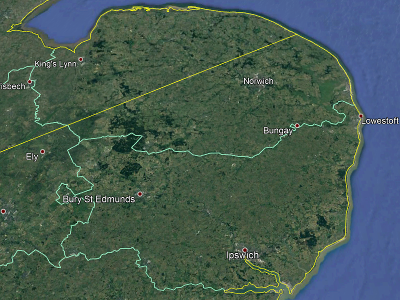 Figure 1. Graze track. Track in Google Earth.
Figure 1. Graze track. Track in Google Earth.
Star
SAO77178 (PPM94371)
On the night of 22/23 August 1992, the Moon grazed the star SAO 77178. I calculated the graze track using software developed by the Belgian amateur astronomer, Jean Meeus, and positional data from the SAO catalogue. The track crossed East Anglia from St Albans in the west to Lowestoft in the east. Because the graze occurred very early in the morning, only one other member of OASI, namely Alan Smith, was keen to observe the event. We aimed to find an observing location off the A140, in the area north of Mendlesham and Wetheringsett.
On the morning of the graze, Alan checked a satellite weather service at 01:30. The forecast was good! Travelling together, we left Ipswich at about 02:00 and found an observing site just off the A140 on the junction with Cedars Hill, Wetheringsett. Conditions were almost perfect apart from some wind, a day of rain having left the atmosphere extremely transparent. We began setting up our telescopes, I the the OASI 11 cm reflector which I had borrowed for the occasion, and Alan his 7.5 cm refractor. At this time, the obligatory band of cloud appeared and blotted out the Moon! Fortunately it soon dispersed, leaving the atmosphere perfectly transparent once more.
We soon identified what we thought was the star and concentrated on it as the Moon approached. The star was easily visible in both telescopes: this pleasantly surprised us. However, as the predicted time of the graze drew near, it became apparent that we were concentrating on the wrong star! This prompted a frantic search for the correct star, which Alan eventually located about 15 minutes after the predicted event time, close to the following limb of the Moon. The star could be glimpsed in the 7.5 cm refractor but not in the 11 cm reflector.
Some 20 years later, re-evaluating the event, I noted that the Tycho 2 catalogue (generated by the ESA Hipparcos mission) lists the star as Tycho 1848-2211-1 at magnitude 9.3, half a magnitude fainter than the SAO catalogue; this may explain why we had such difficulty locating it!
Figure 1 shows a calculation of the track made in 2012 based on the NASA JPL ephemeris DE-405 and Hipparcos star catalogue.
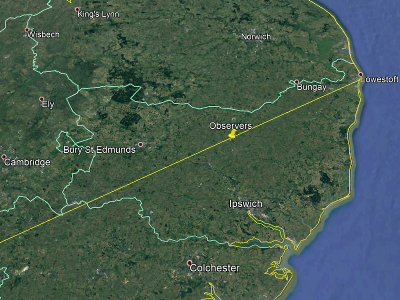 Figure 1. Graze track. Track in Google Earth.
Figure 1. Graze track. Track in Google Earth.
Star
14 Vir (ZC1771, SAO138716, PPM195366)
I obtained detailed predictions for the graze from the BAA some months in advance. The track passed close to Yoxford and I made plans to observe from near there. As usual, few members expressed interest in participating and it was possible to organise only a single observing party, comprising me, Mike Harlow, Martin Cook and Roy Gooding.
At 20:00 on 27 December, the prospective observers telephoned me to discuss whether the observation was to proceed. Although the sky over Ipswich was completely cloudy, one of my relatives who lived near Yoxford reported by phone that the sky there was completely clear apart from some light mist. We therefore decided to proceed as planned.
At 02:45, the prospective observers again telephoned for final confirmation that the observing trip was to go ahead. The sky was completely clear so the decision to proceed was unanimous. However, on arrival at the observing site, off a little-used road, the sky was totally obscured - even the Moon was invisible! The sky remained this way until after the time of the graze. At 04:50 we packed up and returned home. Yet another wash out!
Figure 1 shows a calculation of the track made in 2012 based on the NASA JPL ephemeris DE-405 and Hipparcos star catalogue. Figure 2 shows three of the four observers on site.
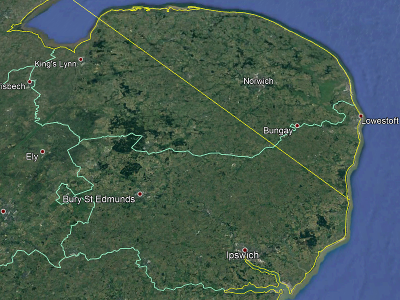 Figure 1. Graze track. Track in Google Earth.
Figure 1. Graze track. Track in Google Earth.
Footnote: despite the event being clouded out, it was notable on two counts. Firstly, it was the fifth graze of the year: usually there are only one or two events visible from East Anglia during a year. Secondly, OASI member Mike Harlow was attending his first graze. (Mike brought with him a 20 cm Dobsonian reflector fitted with optics made from glass blanks originally purchased by me in 1975. Unfortunately, the only use made of it was to fire pulses of light, generated by a flash gun positioned at the Newtonian focus, into the night sky. Spectacular!)
Star
5 Gem (ZC936, SAO78079, PPM95574)
I obtained detailed predictions of the graze from the BAA some months in advance. The track passed close to Dunwich, on the coast of East Anglia, and OASI made plans to observe from that area. As usual, only a single observing party could be mustered.
At 19:00 on 16 May, the potential observers, other than me, gathered at Martin Cook's home. The sky was completely cloudy and the decision was readily made to call off the 35 km trip to the chosen observing site. However, by chance I was on a company course at Aldeburgh (near Dunwich) at the time, and skies there were completely clear. When I contacted Martin to pass on my weather report, he thought at first that I was joking! The observers hurriedly reversed their decision and set off for the chosen meeting point.
On arrival at the site, part way along a farm track, the sky was clear apart from some clouds lurking ominously close to the western horizon. Martin set up his 4.5" reflector and, at a magnification of about 150x, located the star already close to the lunar limb. The customary frantic scramble ensued to set up the rest of the instruments and to get the MSF Rugby clock and tape recorders running.
By 21:09 it was obvious that the event was going to be a very near "miss". Was this due to incorrect predictions, mistaken map reading, or was this the whole point of graze observing? Subsequent analysis and checking indicated that we were positioned on the track predicted by the BAA.
Plotting the track some 21 years later using the JPL ephemeris DE-405 and Hipparcos star catalogue produced a graze line some 1.0 km to the south-west of the observers' location. Errors in the BAA prediction therefore may explain the observers witnessing a "near miss" rather than a graze.
Figure 1 shows predictions of the graze track: in green, the original BAA prediction from 1991 and, in yellow, a calculation made in 2012 using the NASA JPL ephemeris DE-405 and Hipparcos star catalogue.
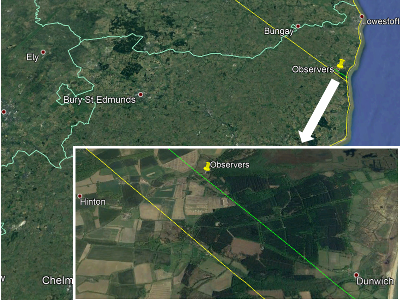 Figure 1. Graze track. Track in Google Earth.
Figure 1. Graze track. Track in Google Earth.
Star
SAO76189 (PPM 92884)
Figure 1 shows a calculation of the track made in 2012 based on the NASA JPL ephemeris DE-405 and Hipparcos star catalogue. Unfortunately, the event was clouded out.
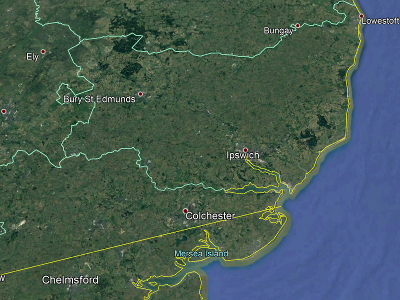 Figure 1. Graze track. Track in Google Earth.
Figure 1. Graze track. Track in Google Earth.
Star
23 Leo (ZC1449, SAO98809, PPM126856)
I obtained detailed predictions for the graze from the BAA some months in advance. The track passed close to both Orwell Park Observatory and the home observatory of OASI's chairman, David Payne. As usual, only a single travelling observing party could be mustered (in addition to David, who planned to observe from his home).
At 20:00 on 12 May, the observers gathered at Martin Cook's home. The sky was partially cloudy but we decided to make the 15 km trip to the chosen site near Alderton. On arrival at the site, part way along a farm track, the sky was clear apart from some clouds lurking ominously close to the western horizon. Martin set up his 4.5" reflector and at a magnification of about 150x located the star already close to the lunar limb. A frantic scramble ensued to set up the rest of the instruments and get the tape recorders and MSF Rugby clock running (a highly accurate radio-synchronised clock).
At precisely 21:27:11 Martin noticed that the star had disappeared. Mike Barriskill, having trouble with his recorder, missed the disappearance. It quickly became apparent that the event was not in fact not going to be a graze, but a total occultation. Incorrect predictions, mistaken map reading, or was this the whole point of observing grazes? At 21:30:17, Mike recorded the reappearance. Unfortunately, I missed both events because of mechanical problems with my telescope mount! A later phone call to David Payne, situated in his observatory to the north-east of the track, revealed that he had observed a "miss".
Plotting the track some 23 years later using the JPL ephemeris DE-405 and Hipparcos star catalogue produced a graze line some 3 km to the north-east of the observers' location. Errors in the BAA prediction therefore may explain the observers witnessing a total occultation rather than a graze.
Figure 1 shows predictions of the graze track: in green, the original BAA prediction from 1989 and, in yellow, a calculation made in 2012 using the NASA JPL ephemeris DE-405 and Hipparcos star catalogue.
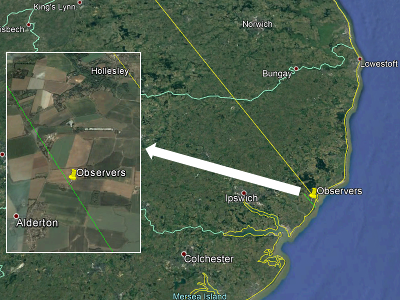 Figure 1. Graze track. Track in Google Earth.
Figure 1. Graze track. Track in Google Earth.
Star
ZC186 (SAO109766, PPM144424)
ZC313 (SAO92803, PPM117971)
Two graze tracks crossed the East Anglian region on consecutive nights on 25 and 25 January 1988. As usual, I obtained from the BAA details of predicted graze tracks and plotted them on large scale maps. Observing sites were chosen from the maps (with due regard to the location of terrestrial lighting, e.g. airfields, large towns, etc) and observing parties arranged.
In order to obtain useful observational data, occultation disappearance and reappearance times need to be recorded to an accuracy of a tenth of a second or better. Members of OASI usually estimate event times by using a portable cassette tape recorder, the nearest public telephone box and a lot of rushing about! After setting up at the chosen site, an observer travels to the nearest phone box, dials the speaking clock and starts the tape recorder (on record). Leaving the recorder running, he returns to the observing site, completes the observation, recording his observations verbally, and then returns once more to the telephone box to record another few seconds of speaking clock. Later analysis of the tape using a stopwatch yields estimates of event times. Earlier this year, I obtained an MSF Rugby radio clock (a clock synchronised to a very accurate time signal broadcast from Rugby) so all the dashing to and from a phone box should now be a thing of the past!
The track of the first graze, on the evening of 24 January, passed passing north of Wroxham, a round trip of about 240 km from Ipswich. The day started clear and bright but gradually became more and more overcast. We called off the observing trip late in the afternoon (fortunately, before the parties had set off).
The track of the second graze passed only 20 km from Ipswich and the observation necessitated a round trip of only some 60 km, so we arranged a relatively late departure for the observing teams. During the day, cloudless skies were interspersed with periods of complete cloud cover. The observing parties set out and reached the rendezvous point along the A12 towards Colchester just in time to cancel the session because of impending rain! Everyone returned home, unpacked equipment and pondered the unfortunate vagaries of the British weather.
Figure 1 shows the graze tracks as follows: 24 January, ZC186 - yellow; 25 January, ZC313 - green.
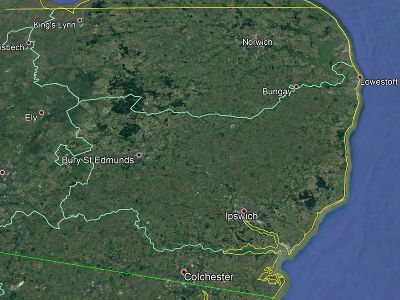 Figure 1. Graze tracks. Tracks in Google Earth.
Figure 1. Graze tracks. Tracks in Google Earth.
Star
19 Cnc (λ Cnc, ZC1251, SAO80113, PPM98611)
During 1986, there was only one grazing lunar occultation within reasonable travelling distance of Ipswich; it occurred on Saturday 22 November. Because of the shortage of alternative observing opportunities during the year, the usual group of OASI enthusiasts who enjoy rising at unearthly hours and driving to distant corners of East Anglia to observe cloud formations (this is not the intention but is usually the case) decided that it was a "must" for a Society expedition. The event occurred around 04:45 meaning that observers would need to be on the road not long after 03:00 in order to travel, locate a suitable site and set up equipment in time.
The prediction of the graze track provided by the RGO at Herstmonceux ended at Thetford. There was insufficient time to obtain predictions for the Ipswich area so Alan Smith extrapolated the path further east. The potential errors of this process coupled with our experiences during the February 1985 graze (concerning discrepancies between the ideal and the real lunar disc) resulted in a decision to observe from the vicinity of Diss. Further extrapolation of the track indicated that it would pass close to my home in the village of Wickham Market so I magnanimously volunteered to observe from home in order to provide a second observing station. (Home observing sessions are much easier to cope with: I can simply roll out of bed, open up the observatory, carry out the observation, close up and roll back into bed - all without having to wake up properly!)
Friday 21 November was a grey, dull, depressing, winter's day. Everyone was feeling quite cheerful (we wouldn't have to get up at ridiculous hours in the morning!) until Alan Smith rang with the news that he had a weather report indicating that a clear spell was due and should arrive in time for the occultation.
Saturday 22 November 03:00 (approx): everyone wakes up, looks outside, thick cloud - so much for Alan's weather forecast! - and returns to bed. I, however, had set my alarm for 04:00 and, although I too woke up at about 03:00 and looked at the weather, I did not cancel the alarm. Duly awakened again at 04:00, I looked out to see the clear patch of sky arriving, with the lawn and observatory bathed in moonlight!
I rose, opened the observatory, found my tape recorder, set it recording and captured a time signal from the speaking clock. At 04:31 the star was easily visible approximately 12 arcmin off the bright southern limb. At 04:40 the distance from the limb had reduced to approximately 2 arcmin and the star was close to the terminator. By 04:42, the distance had reduced to about 1.5 arcmin and the star had passed the terminator. I couldn't see the dark limb and therefore, after the star had passed the terminator, I had to extrapolate the bright limb beyond the terminator in order to estimate the distances. At 04:44, I estimated the distance to be about 1 arcmin. At 04:45, I predicted that the star was going to "miss". I was right! No occultation or graze occurred. Ten minutes later I packed up.
Figure 1 shows a modern prediction of the track, using the NASA JPL ephemeris DE-405.
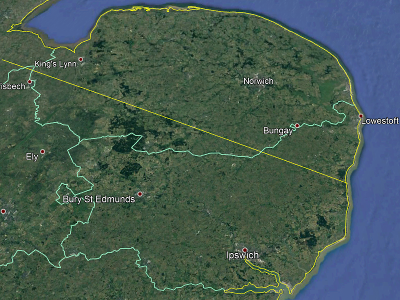 Figure 1. Graze track. Track in Google Earth.
Figure 1. Graze track. Track in Google Earth.
Star
ZC869 (SAO77494, PPM94789)
On Sunday 11 August 1985, I went on a field trip to observe the Perseids and the grazing occultation of ZC869. I travelled with my wife, two children and a tent to a camp site at East Runton, on top of the cliffs and very exposed to the wind and rain. The site was just off the predicted graze track (figure 1). Unfortunately, my attempts the following evening to observe the graze were unsuccessful as I could not find ZC869 in the binoculars; however, I observed several meteors.
Figure 1 shows a calculation of the track made in 2012 based on the NASA JPL ephemeris DE-405 and Hipparcos star catalogue.
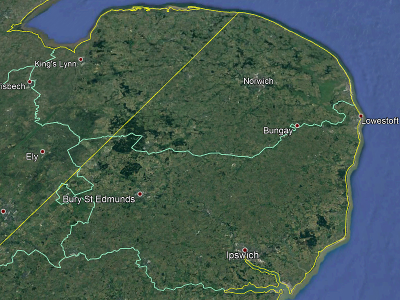 Figure 1. Graze track. Track in Google Earth.
Figure 1. Graze track. Track in Google Earth.
Star
100 Vir (λ Vir, ZC2053, SAO158489, PPM228615)
For this graze we planned to have two groups of observers, situated on either side of the predicted track. Alan Smith had written to the RGO at Herstmonceux for details of the predictions and had duly plotted them on an Ordnance Survey map. This showed the track passing only 2 km north of my home observatory at Wickham Market (see figure 1). I therefore elected to form a third observing station using my 10" reflector. The graze was a southern limb event and, as my observatory was located just south of the predicted track, I expected to observe a "near miss".
On Friday 08 February it began to snow. On Saturday it continued to snow and then froze. Things were beginning to look unfortunate for observation of the graze. However, on Saturday night we held a committee meeting at Orwell Park Observatory: most committee members managed to attend and reported roads that were not too bad. It looked as if observations would be possible provided skies were clear during the early hours of Monday morning. We left the Observatory planning to proceed with the observations, with Martin Cook and Alan Smith forming one travelling observing team and Roy Gooding and Eric Sims the other.
Although no more snow fell during Sunday, unfortunately, the winds increased. Much snow previously deposited on the fields of Suffolk ended up in drifts on the roads with the result that the county ground to a halt. As a result, we had to abandon "field" observations. However, as I didn't have to travel I decided to persevere with observations if the skies cleared. Having decided to get some sleep before the event I set the alarm and went to bed. Events then proceeded as follows:
| Time | Event |
| 01:30 | The alarm sounds! I switch it off quickly not wishing to wake the whole family. First thoughts are: Oh God, I should get up, I hope it's cloudy so that I don't have to! After a few moments, enthusiasm began to return and, peering through the window, I could see stars through gaps in patchy cloud. Is it clear enough to be worth getting up? Where's the Moon? I couldn't see the Moon from the window but I could discern the glow of moonlight on the walls of my observatory so I decided to get dressed and go outside to take a look. |
| 01:45 | I am outside in sub-zero temperatures and there is a near-gale blowing, but I can see the Moon! I collect a couple of eyepieces and open up the observatory. |
| 01:50 | I find the star shining south-west of the terminator. I realise that I have no means of timing and recording observations and beat a hasty retreat indoors to collect a portable tape recorder. I set it recording then dial the speaking clock to record a time reference. I leave the tape recorder running to capture details of my observations for later analysis. |
| 02:06 | I am back at the telescope again. The star is now at the terminator. I cannot make out the dark limb and find it difficult to estimate the distance of the star from the dark limb. |
| 02:09 | I am convinced that closest approach had occurred a couple of minutes ago and start to use the crater Clavius to estimate the position of the star. |
| 02:09:57 | The star disappeared! (Timing derived from tape recording.) |
| 02:11:05 | The star reappeared. I continued to observe it for several minutes and then closed up for the night. |
The following diagram illustrates the visual configuration of disappearance and reappearance events.
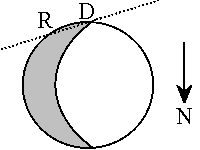
If the predicted track were correct, from my observatory I should have observed a "near miss" rather than a disappearance. So what went wrong? The first tentative explanation was that Alan made a mistake plotting the graze track. However, I independently plotted the track on an Ordnance Survey map and verified Alan's plot. So, the track predictions themselves must have been in error and by at least three kilometres! I sent details of my observations to the RGO for information and comment.
I subsequently received a reply explaining that the discrepancy was caused by local variation in the topography of the lunar limb. The RGO predict the graze track based upon a mean lunar limb. The real limb can deviate from the mean by ±3 arcsec; the local lunar topography for the 100 Vir event was ±2 arcsec and Wickham Market was only about +1 arcsec outside the mean limb prediction and therefore an occultation was seen.
Unfortunately, when we receive predictions for grazing occultations we do not receive details of limb variations (I had thought that the predictions took account of them). This could mean that, for future observations of grazing occultations, we need to space observing teams at varying distances from the track e.g. at 0, ±1 arcsec, ±2 arcsec, etc. This will be challenging as we usually barely manage to muster a single observing team!
Figure 1 shows a calculation of the track made in 2012 based on the NASA JPL ephemeris DE-405 and Hipparcos star catalogue.
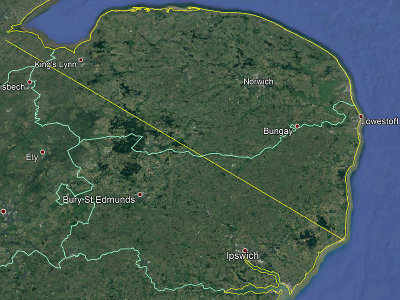 Figure 1. Graze track. Track in Google Earth.
Figure 1. Graze track. Track in Google Earth.
Star
ZC1578
Alan Smith made preparations for a field trip to observe the graze of ZC1578 on 07 December 1982. There is no record of an observation so the event was likely another washout!
Figure 1 shows a calculation of the track made in 2012 based on the NASA JPL ephemeris DE-405 and Hipparcos star catalogue.
 Figure 1. Graze track. Track in Google Earth.
Figure 1. Graze track. Track in Google Earth.
Star
ZC1269 (SAO80201, PPM98731)
At 04:00 on 11 October 1982, three members of OASI stood in a farmyard in the middle of Suffolk, preparing to observe the graze of ZC1269 some three-quarters of an hour later. Unfortunately, as is often the case on these occasions, the weather was far from ideal: there was a heavy ground mist with a fog bank advancing ominously ever closer. With extreme difficulty, the observer at the largest of the OASI telescopes, erected on a site that turned out to suffer from as much traffic as Piccadilly Circus in rush hour, managed to discern with difficulty the star about to be grazed. The star disappeared, but observing conditions were so bad that it was impossible to decide whether the cause was obscuration by the lunar limb or by fog!
After taking the customary photograph of the observing team, the observers returned home to find, as so often, completely clear skies over Ipswich.
Figure 1 shows a calculation of the track made in 2012 based on the NASA JPL ephemeris DE-405 and Hipparcos star catalogue.
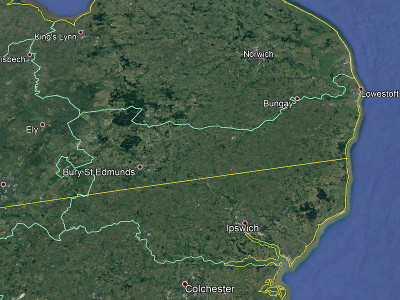 Figure 1. Graze track. Track in Google Earth.
Figure 1. Graze track. Track in Google Earth.
Star
87 Cet (μ Cet, ZC405, SAO110723, PPM118503)
The graze track of 87 Cet on 28 February 1982 passed just south of Chelmsford and went out to sea at Foulness. Following the failed attempt on 04 January 1982 to observe the graze of ZC346, a considerably fainter star, hopes were high for a successful observation and OASI held a joint meeting with Chelmsford and District Astronomy Society to observe the event. Unfortunately, the observation was a wash out!
Figure 1 shows a calculation of the track made in 2012 based on the NASA JPL ephemeris DE-405 and Hipparcos star catalogue.
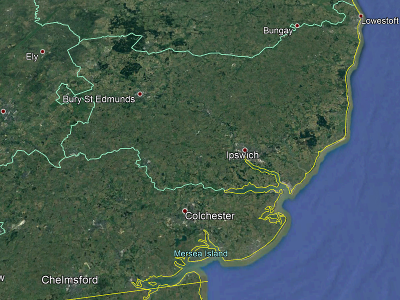 Figure 1. Graze track. Track in Google Earth.
Figure 1. Graze track. Track in Google Earth.
Star
ZC346 (SAO110493, PPM145518)
Four members of OASI left Ipswich at 7.00pm on 04 January 1982 to observe the graze of ZC346, for which I had previously plotted the graze track. Weather conditions were favourable and the party eventually found an observing site SW of Barton Broad in North Norfolk. Apart from a brisk wind, conditions remained good but all attempts to find ZC346 were unsuccessful, even long after the graze, when the Moon had moved some distance away.
Figure 1 shows predictions of the graze track: in green, the original BAA prediction from 1982 and, in yellow, a calculation made in 2012 using the NASA JPL ephemeris DE-405 and Hipparcos star catalogue.
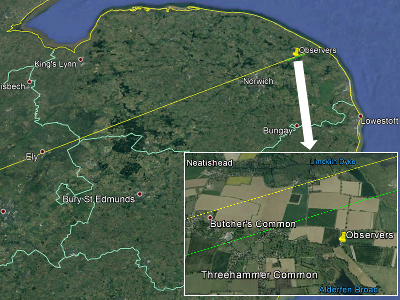 Figure 1. Graze track. Track in Google Earth.
Figure 1. Graze track. Track in Google Earth.
Object
Venus
Alan Smith, Martin Cook, Mike Barriskill and Roy Gooding, four dedicated graze observers from OASI, took to the road once more on Sunday 05 October 1980 at 4.30am. (Some of the party had stayed up all night following a committee meeting at Orwell Park Observatory on the previous evening.) Their aim was to observe a grazing lunar occultation of the planet Venus: this is a rare event, on this occasion visible only along a narrow path just north of Norwich. The observers met at Norwich Road in Ipswich and travelled to Horning in the Norfolk Broads, aiming eventually for an observing site on a farm track mid-way between Horning and Hoveton. They brought with them binoculars, two small reflectors, an electronic watch for timing events and a tape recorder to capture observing notes. Although the journey from Ipswich began under clear skies, cloud appeared when the observers arrived at the observing site; fortunately, this remained thin and did not significantly impede observations. On arrival at the observing site, they set up the equipment and then waited for the graze.
The graze lasted for approximately 17 minutes and provided a spectacular site: Venus was visible apparently dodging behind lunar mountains and crater rims. Norwich Astronomical Society together with an outside broadcast crew from Radio Norfolk also observed the graze (from a different location) and they too had a good view.
Figure 1 shows a calculation of the track made in 2012 based on the NASA JPL ephemeris DE-405.
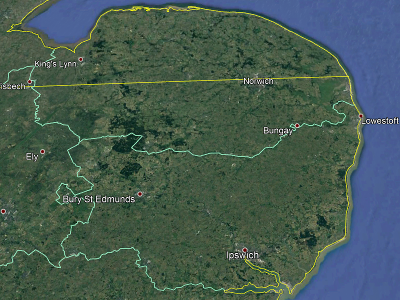 Figure 1. Graze track. Track in Google Earth.
Figure 1. Graze track. Track in Google Earth.
After the graze, the party travelled to Wickham Market to visit David Payne who had observed the graze from his home observatory. Being south of the graze track, he had observed a near miss but, by combining both sets of observations, Alan was able to compute an estimate of the Earth-Moon distance which turned out to be surprisingly accurate.
Table 1 is a transcript of the tape recording made during the observation in Norfolk. "Disk" refers to the apparent planetary disk of Venus.
| Event | Elapsed time (seconds) | Time hh:mm:ss |
Comments |
| 1 | 0.00 | 05:29:00 | First timing mark. |
| 2 | 65.25 | 05:30:05.25 | Losing sight of disk? |
| 3 | 149.00 | 05:30:05.25 | Rapid loss of disk to 50% visible. |
| 4 | 155.75 | 05:31:35.75 | Rapid but slight increase in proportion of disk visible. |
| 5 | 190.00 | 05:32:10 | 50% of disk visible. Second timing mark. |
| 6 | 239.50 | 05:32:59.50 | Rapid loss of disk, ~33% visible. |
| 7 | 290.00 | 05:33:50 | 25% of disk visible. Third timing mark. |
| 8 | 345.75 | 05:34:45.75 | Rapid reduction of disk to pin-point. |
| 9 | 365.00 | 05:35:01.50 | Pin-point of disk visible. |
| 10 | 365.00 | 05:35:05 | Pin-point of disk visible. Fourth timing mark. |
| 11 | 397.50 | 05:35:37.50 | Apparent size of disk increasing. |
| 12 | 421.00 | 05:36:01 | 25% of disk visible. |
| 13 | 477.50 | 05:36:57.50 | Rapid decrease in proportion of disk visible. |
| 14 | 490.00 | 05:37:10 | Pin-point of disk visible. Fifth timing mark. |
| 15 | - | - | Slight increase in visible proportion of disk. |
| 16 | 585.00 | 05:38:45 | Pin-point of disk visible. Sixth timing mark. |
| 17 | - | - | Slight increase in proportion of disk visible. |
| 18 | 640.00 | 05:39:40 | Rapid decrease in proportion of disk visible to pin-point. Seventh timing mark. |
| 19 | 667.50 | 05:40:07.50 | Rapid increase in proportion of disk visible. |
| 20 | 860.00 | 05:43:20 | Proportion of disk visible rapidly increasing until attains 50%. Eighth timing mark. |
| 21 | 915.00 | 05:44:15 | Disk completely visible |
Table 1. Transcript of recording by observers in Norfolk.
Figures 2 and 3 are correspondence between Roy and the JAS reporting the observations and figures 4-7 are photographs by Martin and Alan taken during the event.
Star
78 Tau (θ2 Tau, ZC671, SAO93957, PPM119937)
On the evening of 15-16 August 1979, OASI undertook an expedition to observe a grazing occultation. The observers were Martin Cook, David Barnard, Wayne Brieske, Roy Adams and Alan Smith. The observers arrived at the selected observing site, on the highest ground along the graze track, just north of Bildestone, Suffolk, at 23:30 and found to their surprise an extremely clear sky, apart from the customary small patch of cloud covering the Moon! Once a particularly intrusive landing light situated on the nearby Wattisham RAF base had been extinguished, they observed the Andromeda Nebula and held an impromptu meteor watch, observing several Perseid meteors.
Unfortunately, the cloud obscuring the Moon prevented observation of the graze and only when the observers arrived back in Ipswich at about 01:00 were they able to see clearly both the star and the Moon!
Figure 1 shows a calculation of the track made in 2012 based on the NASA JPL ephemeris DE-405 and Hipparcos star catalogue. Figure 2 shows some of the observers.
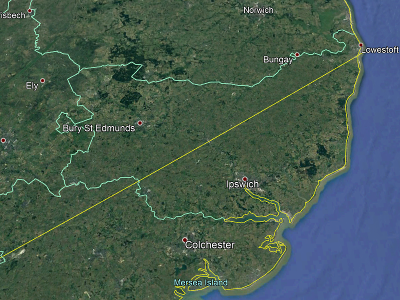 Figure 1. Graze track. Track in Google Earth.
Figure 1. Graze track. Track in Google Earth.
Star
ZC1344 (SAO98278, PPM125986)
On 25 October 1978, OASI held its third expedition to observe a grazing lunar occultation. Three pairs of observers, (1) Mike Barriskill and Martin Cook; (2) Dave Barnard and Wayne Brieske; and (3) Alan Smith and non-member Chris Albins assembled at three locations just south of the predicted graze track of ZC1344. The three locations were all approximately 6 km north of Stowmarket and all approximately 1.5 km inside the predicted graze track so as to be reasonably confident of avoiding a "miss".
OASI's previous two attempts at observing a graze, in 1974 and 1976, met with failure due to bad weather. Therefore it was with high hopes for a change of fortune that the observers approached the latest attempt. Unfortunately, yet again the weather was unfavourable: Alan reported that, on arriving at his allocated observing site at Mendlesham, conditions were initially good but, just a few minutes before the graze occurred, cumulo-nimbus cloud obscured the Moon and observations were impossible.
Figure 1 shows the location of the centre of the OASI observing area and predictions of the graze track as follows: in green, the original BAA prediction from 1978 and, in yellow, a calculation made in 2012 using the NASA JPL ephemeris DE-405 and Hipparcos star catalogue.
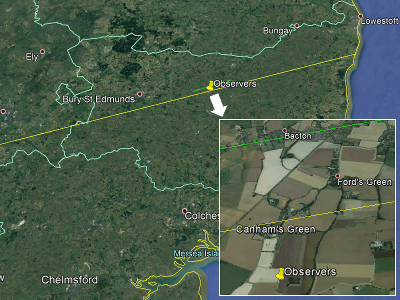 Figure 1. Graze track. Track in Google Earth.
Figure 1. Graze track. Track in Google Earth.
Figures 2-5 show the observers:
Star
ZC3199 (SAO145698, PPM205664)
The second grazing lunar occultation which members of OASI attempted to observe was ZC3199 on 27 November 1976. Learning from experience with the first attempted observation (below), I organised a practice trip to observe the occultation of ZC2745 on 30 September 1974.
The site selected for observing the graze of ZC3199 was Timworth Green, 9 km north of Bury St Edmunds. The observing party comprised 13 members of OASI and two visitors. The observers assembled at the Maypole pub in Whitton, Ipswich, and waited for one of their number to arrive on a train from London which was delayed 40 minutes because of a derailed locomotive at Witham! Finally, the party left the Maypole at 5.45pm. Skies during the day had been very clear, and the Moon was visible from early afternoon onwards. Although rain and high winds were forecast for the evening, the party travelled with high hopes.
On arrival at Timworth, the observers set up three observing stations, keeping in radio contact with one another, and deployed telescopes, synchronised their watches, stop watches and tape recorders with the GPO speaking clock and then waited for the graze to begin. Unfortunately, with only minutes to go, clouds came over and, although the observers could still discern the Moon, albeit with difficulty, the star was not visible. After waiting for half an hour (hoping to see the star after the graze), during which time Charles Radley took photographs of the party, the observers retired to the pub at Beyton to drown their sorrows before returning to Ipswich to enable the visitor from London to catch the 9.45pm train home.
The OASI observing party had used a prediction of the graze track by the BAA, and had stationed themselves just inside that track. Plotting the track some 36 years later using the JPL ephemeris DE-405 and Hipparcos star catalogue, assuming a circular lunar limb profile, gave a predicted graze line some five km north-west of the BAA track so, had skies been clear, the observers should likely have recorded a "miss". Figure 1 shows predictions of the graze track as follows: in green, the original BAA prediction from 1976 and, in yellow, a calculation made in 2012 using the NASA JPL ephemeris DE-405 and Hipparcos star catalogue.
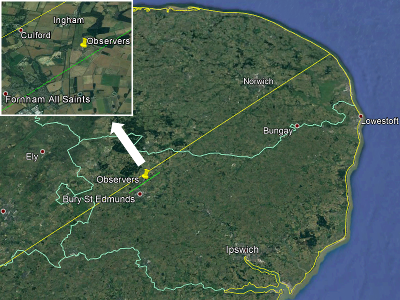 Figure 1. Graze track. Track in Google Earth.
Figure 1. Graze track. Track in Google Earth.
Star
37 Sgr (ξ2 Sgr, ZC2759, SAO187504, PPM269132)
The first graze which members of OASI attempted to observe was 37 Sgr on 21 October 1974. (The graze was preceded 15 minutes earlier by the total occultation of the magnitude 5.0 star 36 Sgr.)
Approximately one year in advance of the event, Charles Radley contacted Gordon Taylor, head of grazing occultation work at the RGO at Herstmonceux and obtained maps and advice on how to observe the event. As members of OASI had no experience of observing such events, Charles organised practice field trips to observe occultations (not grazes) of the following stars: 26 April 1974 ZC969, 26 May 1974 65 Cnc (α Cnc), 02 July 1974 51 Oph, 27 September 1974 46 Cap and ZC3184. For the field trips, members assembled at the Chequers pub at Raydon (west of Ipswich) and then made the short journey to the nearby disused airfield. They used portable tape recorders to record spoken commentary on the observations, after first recording a minute or so of the GPO speaking clock to provide a time reference. (A public telephone kiosk was situated conveniently close to the pub and observing site.) Recall that this was the era before smart phones, video cameras and GPS timing signals!
The first practice run, on 26 April, was particularly memorable. Part of Charles's report of the event in the June 1974 Newsletter gives a flavour:
I shall spare the morbid details, except that we did not see the event, but we gained valuable (if painful) experience of occultation work!! At 22:50 at the Raydon airfield station (where I was), a blue Rover stopped at the site of three telescopes in the middle of nowhere and one of the occupants hollered, "You're a load of loonies!" Half an hour later the car passed again shouting, "Spot the loony!" We did feel loonies, I must admit, but it was highly amusing.
The second practice run, on 26 May, was rather more successful. John Deans reported in the July 1974 Newsletter as follows:
The trial run for the grazing occultation on 21 October, which took place on 26 May, was rather more successful than the first practice run on 26 April. Approximately 15 members assembled bringing telescopes of all dimensions. We set up three observing stations: Station A at Raydon and Stations B and C at Shelley. Seeing conditions were good and at around 21:26 we observed α Cancri occulted by the Moon - disappearance was instantaneous. Observers at Stations B and C were supposed to meet back at Station A after the observation, but ended up losing themselves again!
The next trial run will be on 02 July, the assembly point being the Chequers pub at Raydon at 20:00. These events are proving to be great fun and very interesting - all members are welcome so please come along, the more the merrier! Bring your telescope or binoculars and a portable tape recorder if possible.
Figure 1 (by Roy Cheesman) shows some of the observing team immediately after the occultation of 65 Cnc.
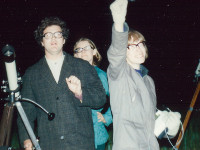 Figure 1. L-R: David Bearcroft, Mrs Cachill and Mark Cachill after observing the occultation of α Cnc.
Figure 1. L-R: David Bearcroft, Mrs Cachill and Mark Cachill after observing the occultation of α Cnc.
The third practice run, on 02 July, was unsuccessful. Again John Deans' report provides the details, this time from the August 1974 Newsletter:
The last trial run on 02 July turned out to be a "wash out" and rain persisted throughout most of the evening. Still, for the landlord of the Chequers pub at Raydon, the evening went well, as he benefited from a visit by some ten members of OASI. The next trial run will be on Friday 27 September - your last chance to gain experience and observe an occultation before the main event on 21 October....
There is no record of the final practice run on 27 September.
Figure 2 illustrates the graze track on 21 October. The green line is the original prediction from 1974; the yellow line a re-calculation in 2012 using the JPL ephemeris DE-405. Two km north of the track is Raydon Airfield (disused), just east of Raydon village, where the observers practised observing total occultations. Charles planned to station the observers in and around the village of Shelley for the graze - this is inside the graze track and risked the observers witnessing a full occultation rather than a graze; however, this was preferable to observing a "miss". He planned to make the final deployment of observers on the night itself depending on how many attended. Unfortunately, the night of the graze itself was clouded out so, although the would-be observers assembled at Shelley, they were unable to observe.
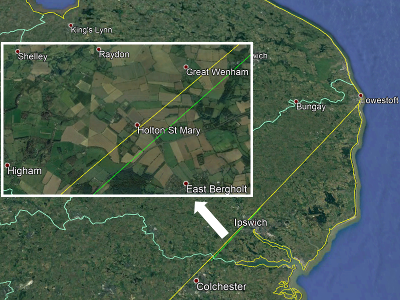 Figure 2. Graze track. Track in Google Earth.
Figure 2. Graze track. Track in Google Earth.
Circumstances of grazes were calculated as follows with a view to organising observing trips and/or analysing observations:
There are generally differences of a few km between the various predictions, where they are repeated for a particular event. This is largely down to improvements in limb data associated with the Kaguya and LRO probes compared to the earlier Watts Charts, or assumed mean limb.